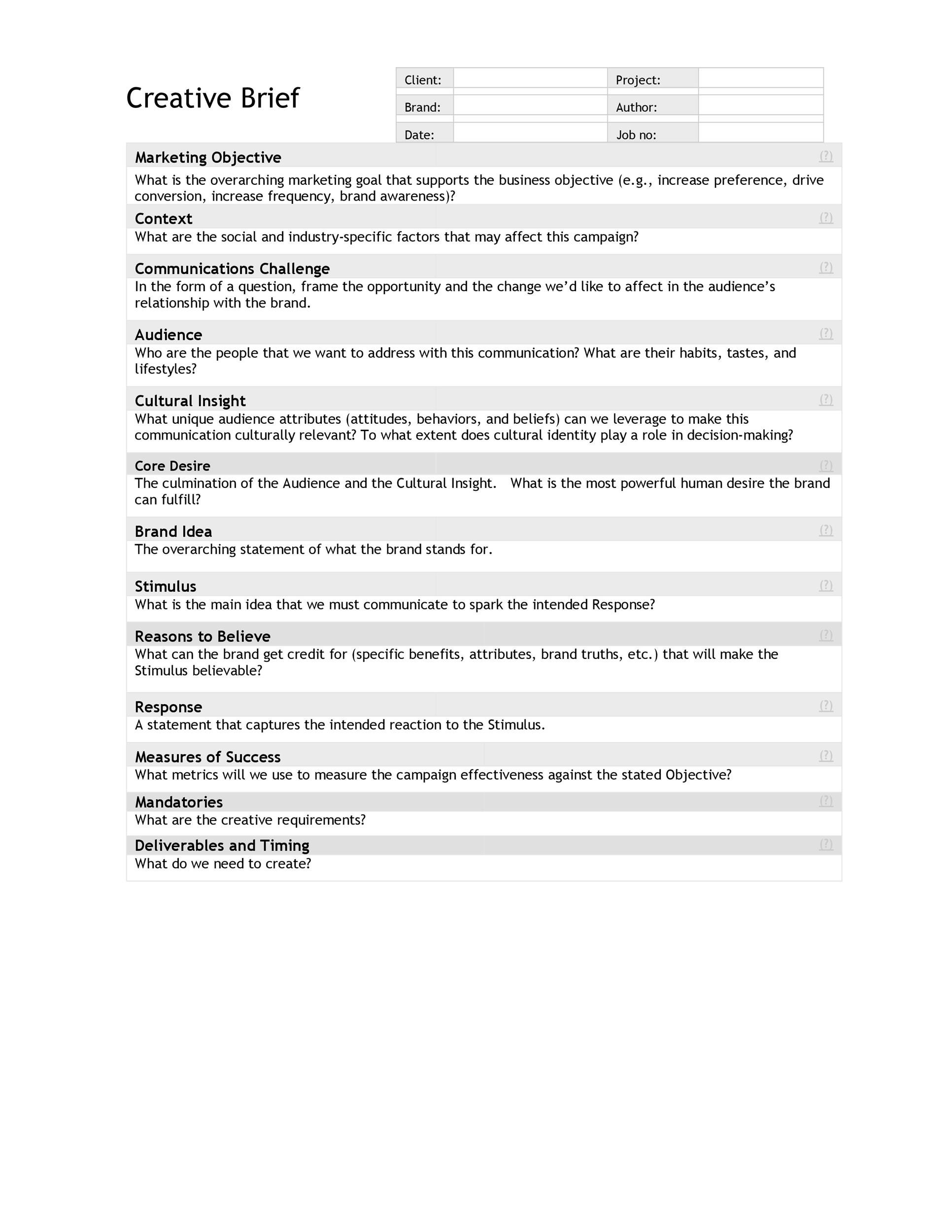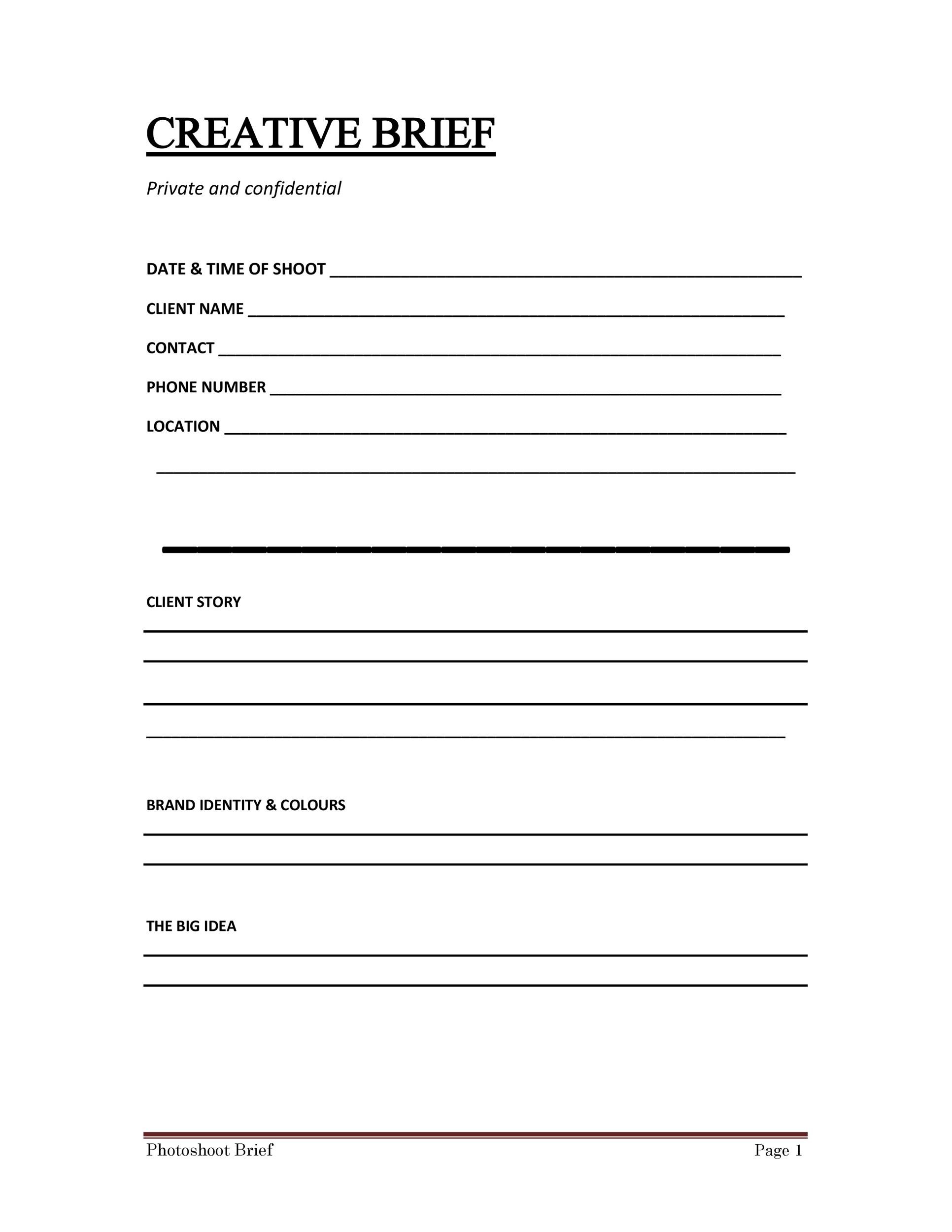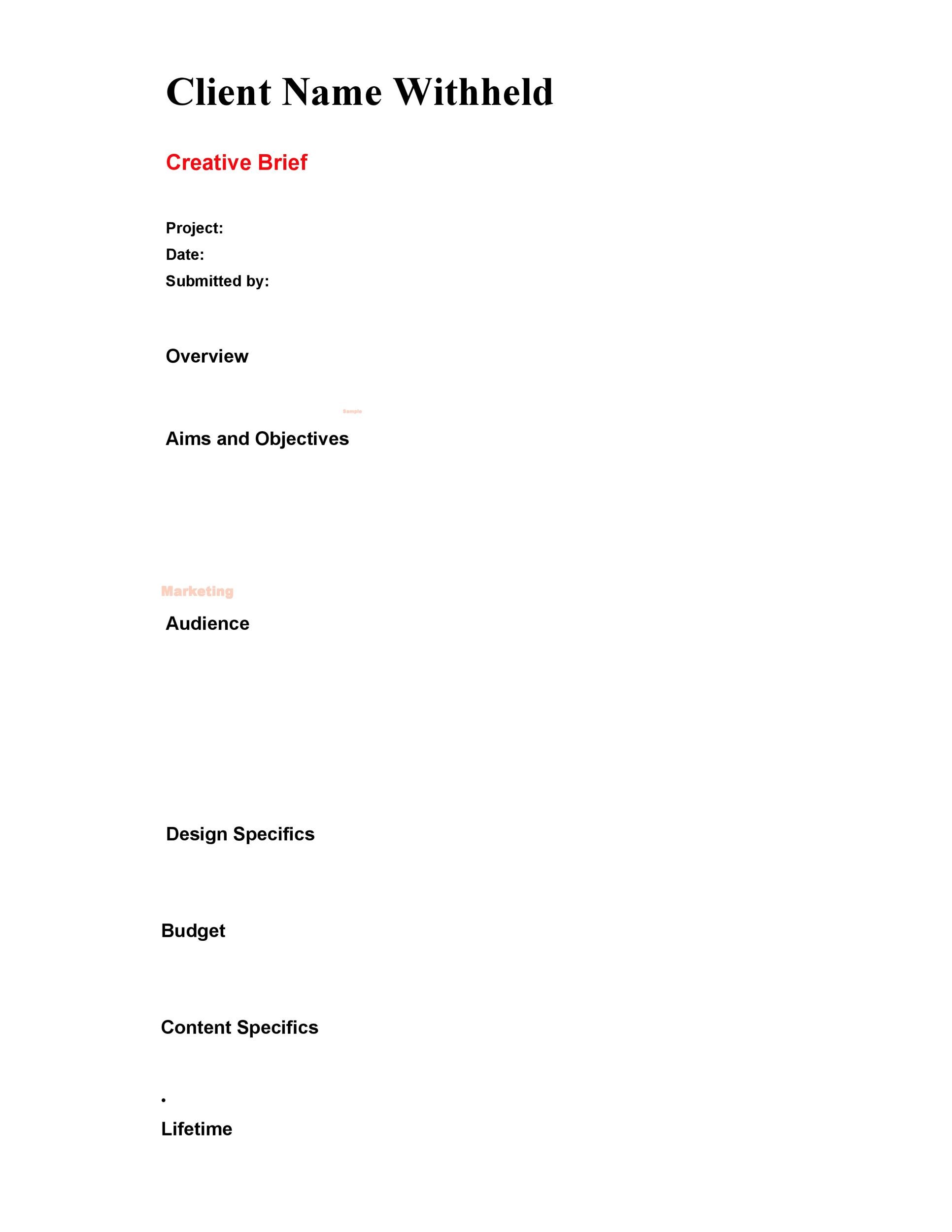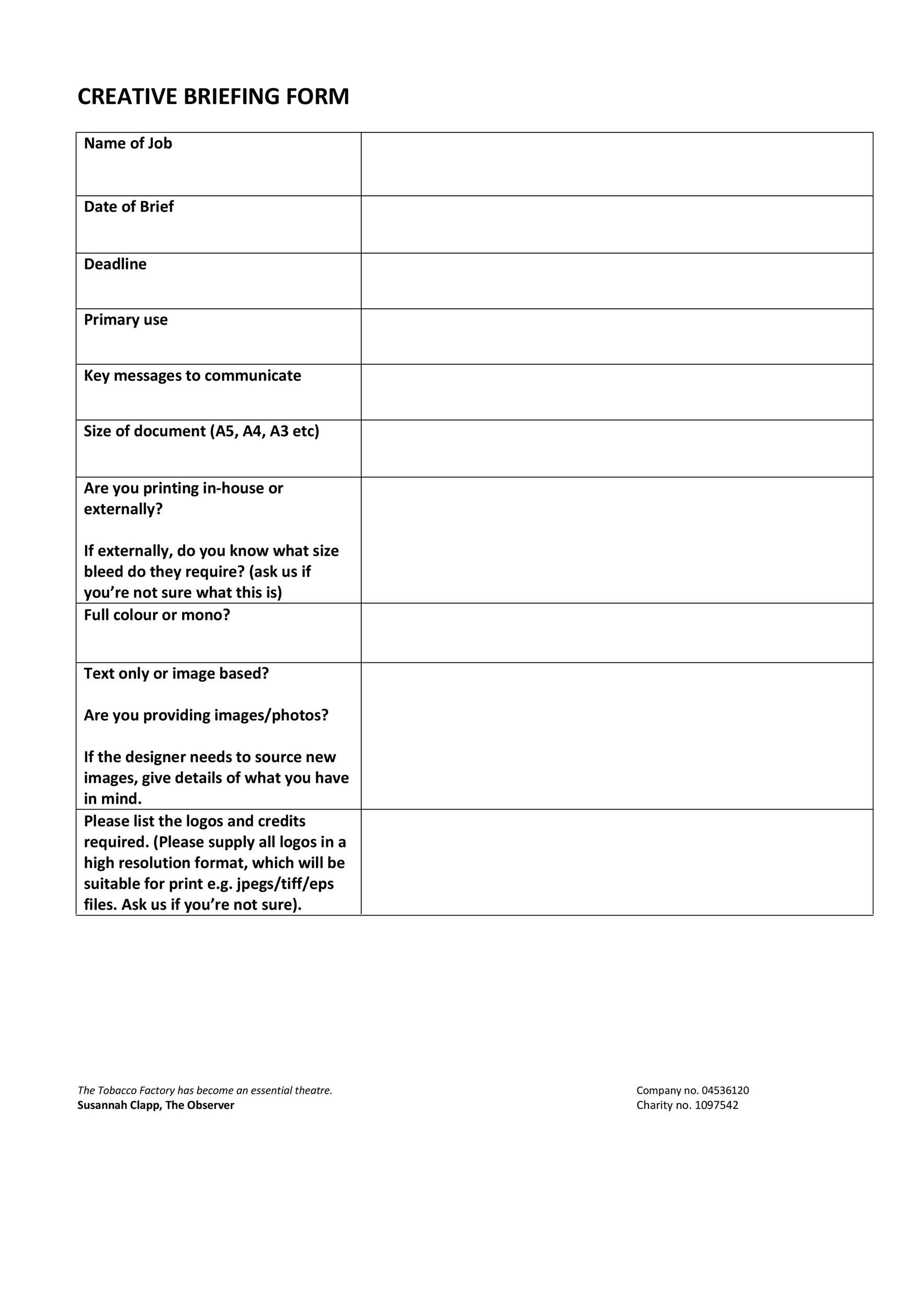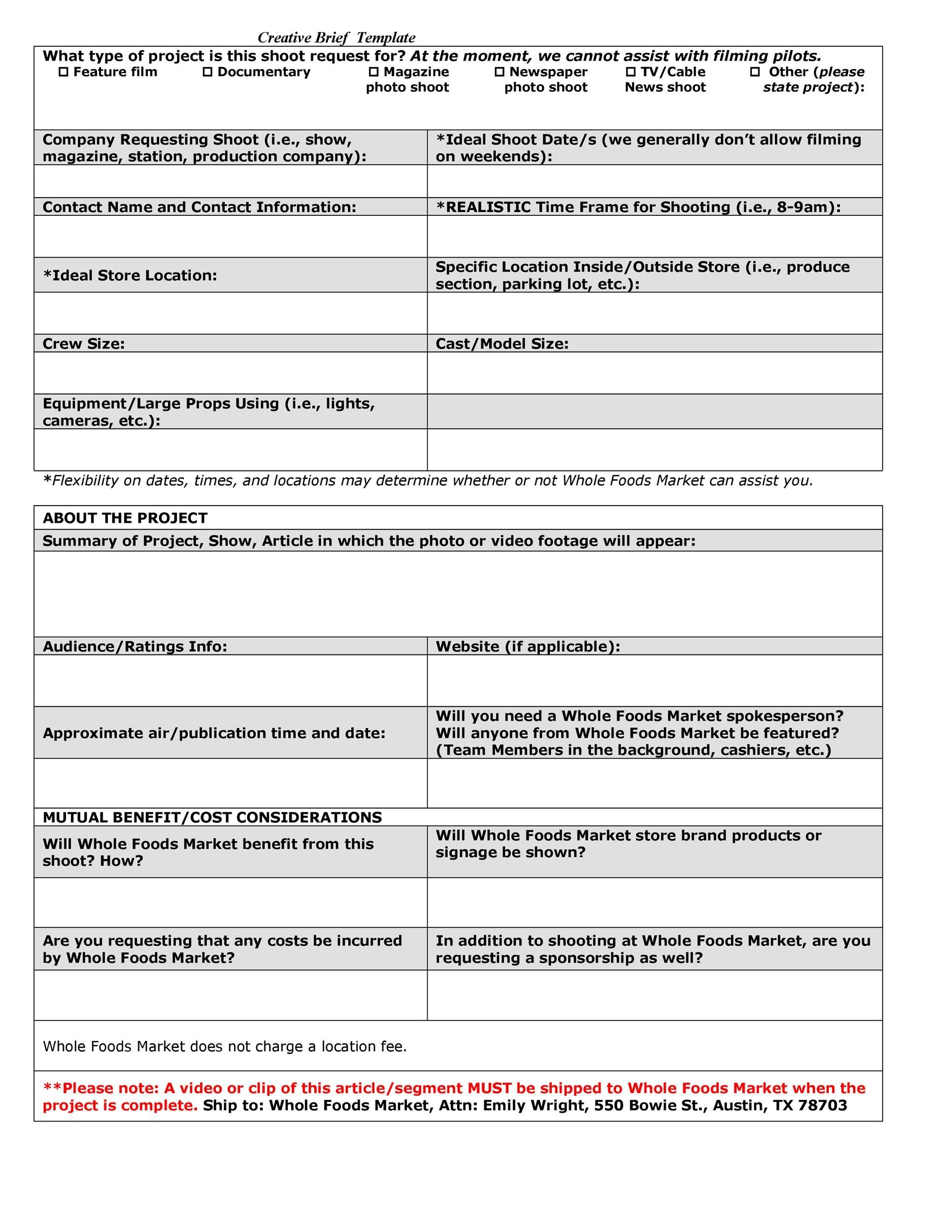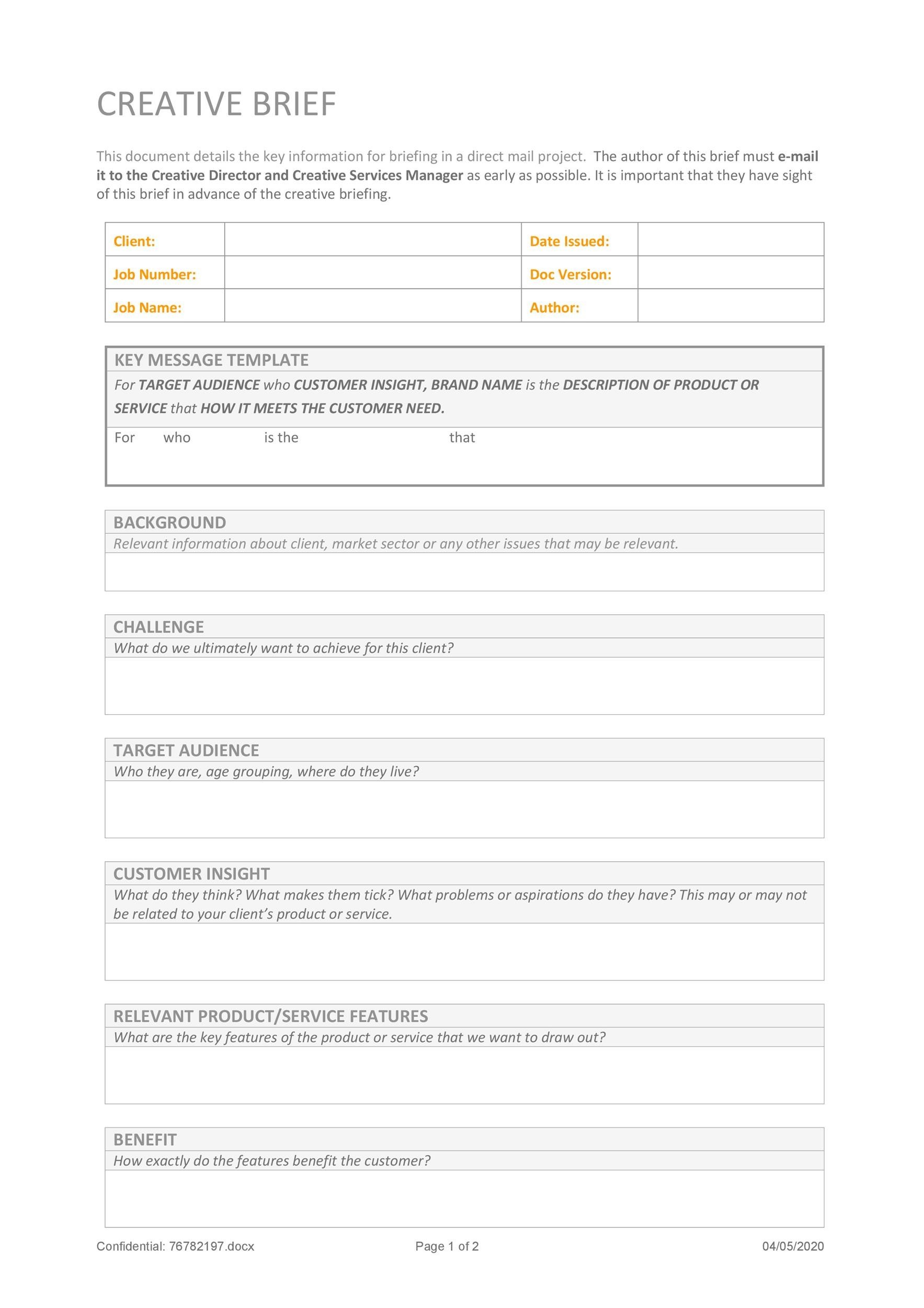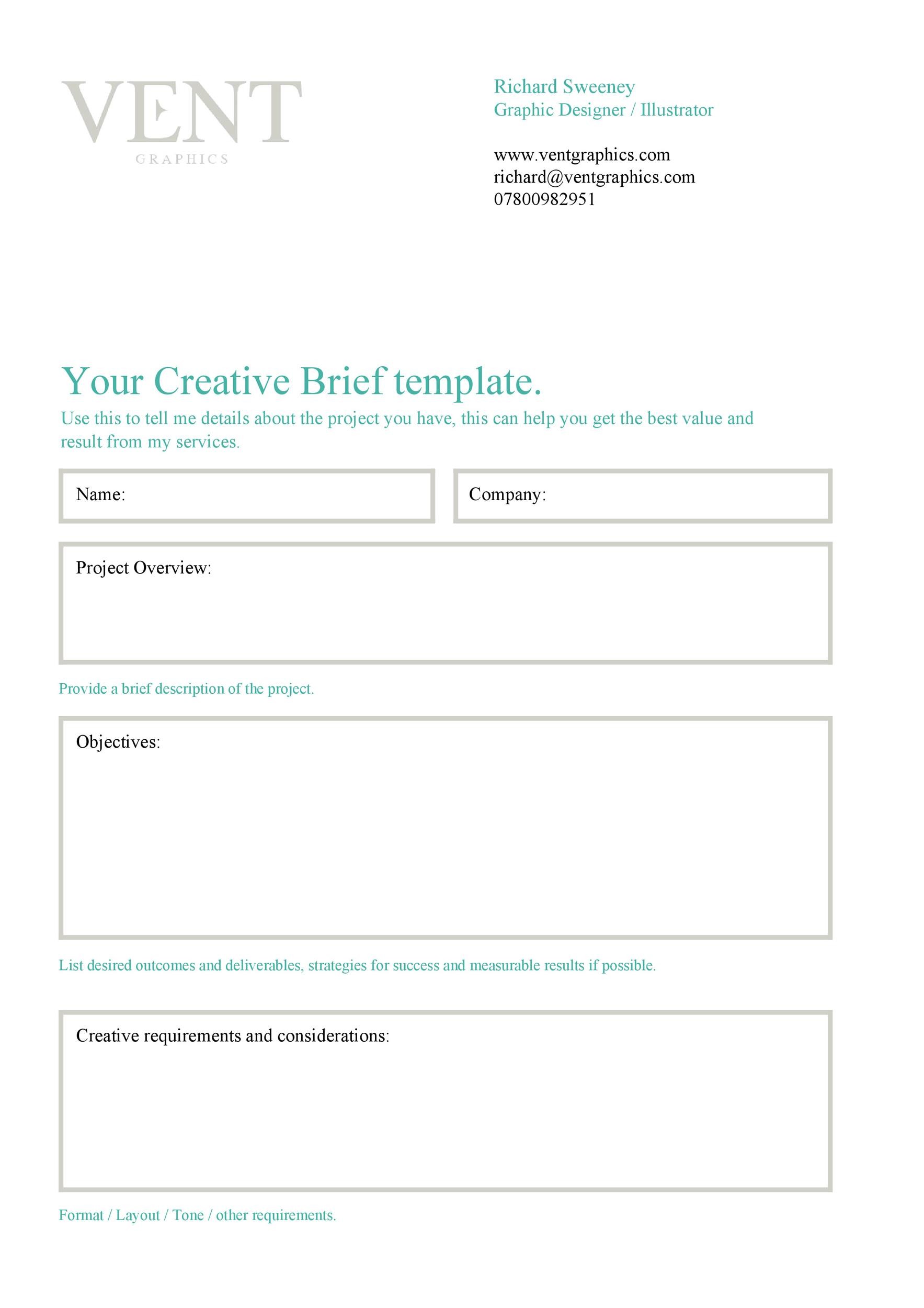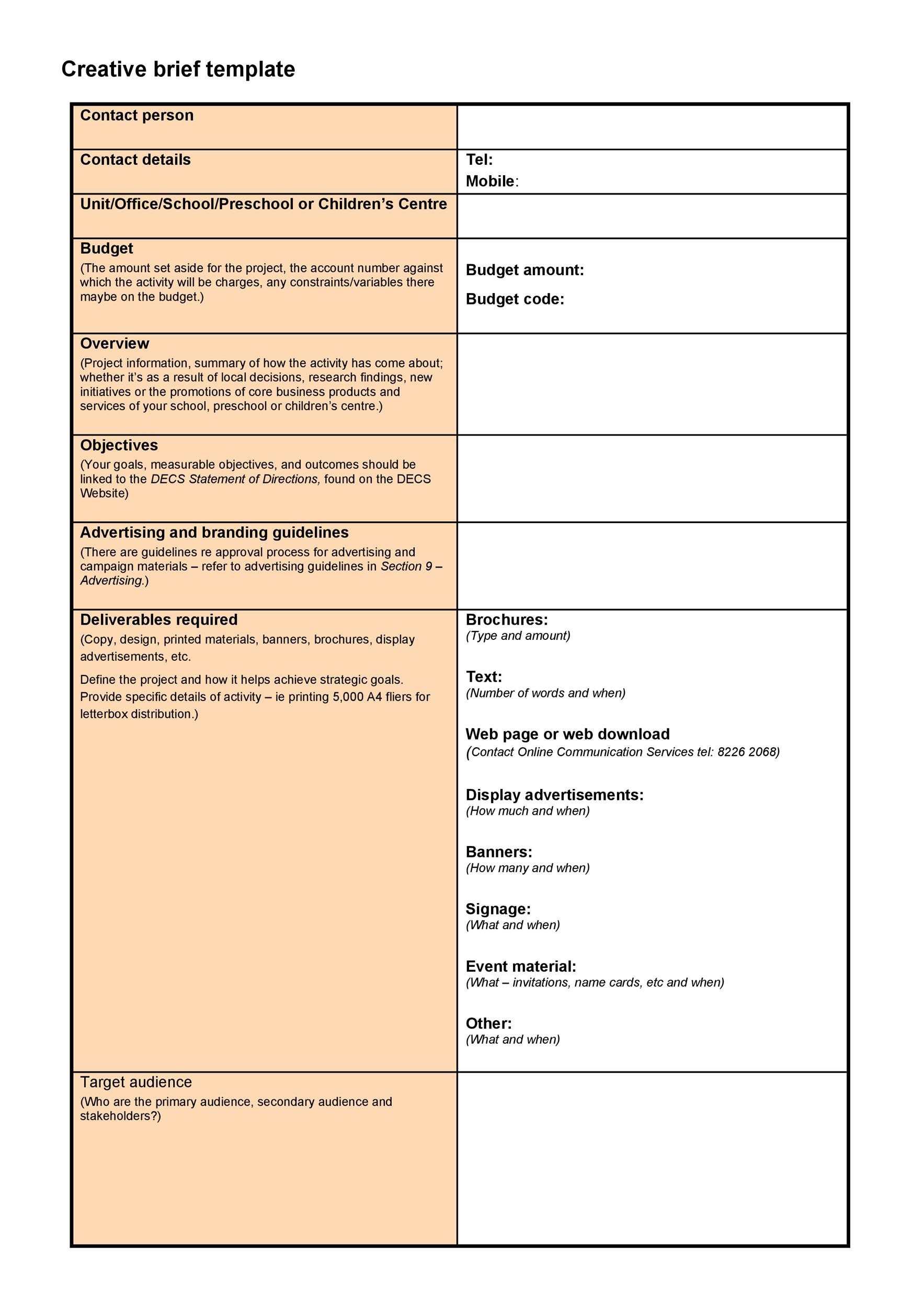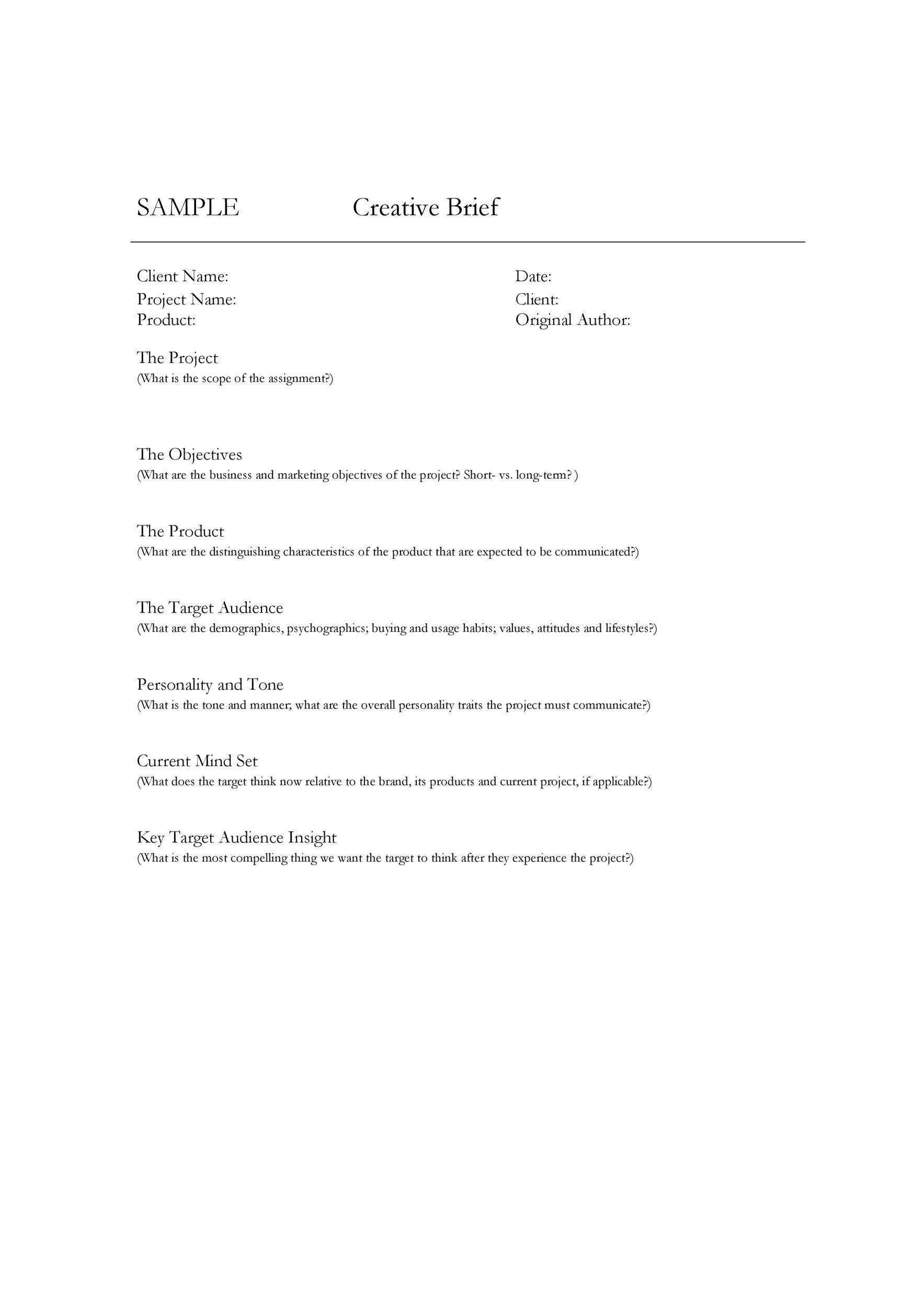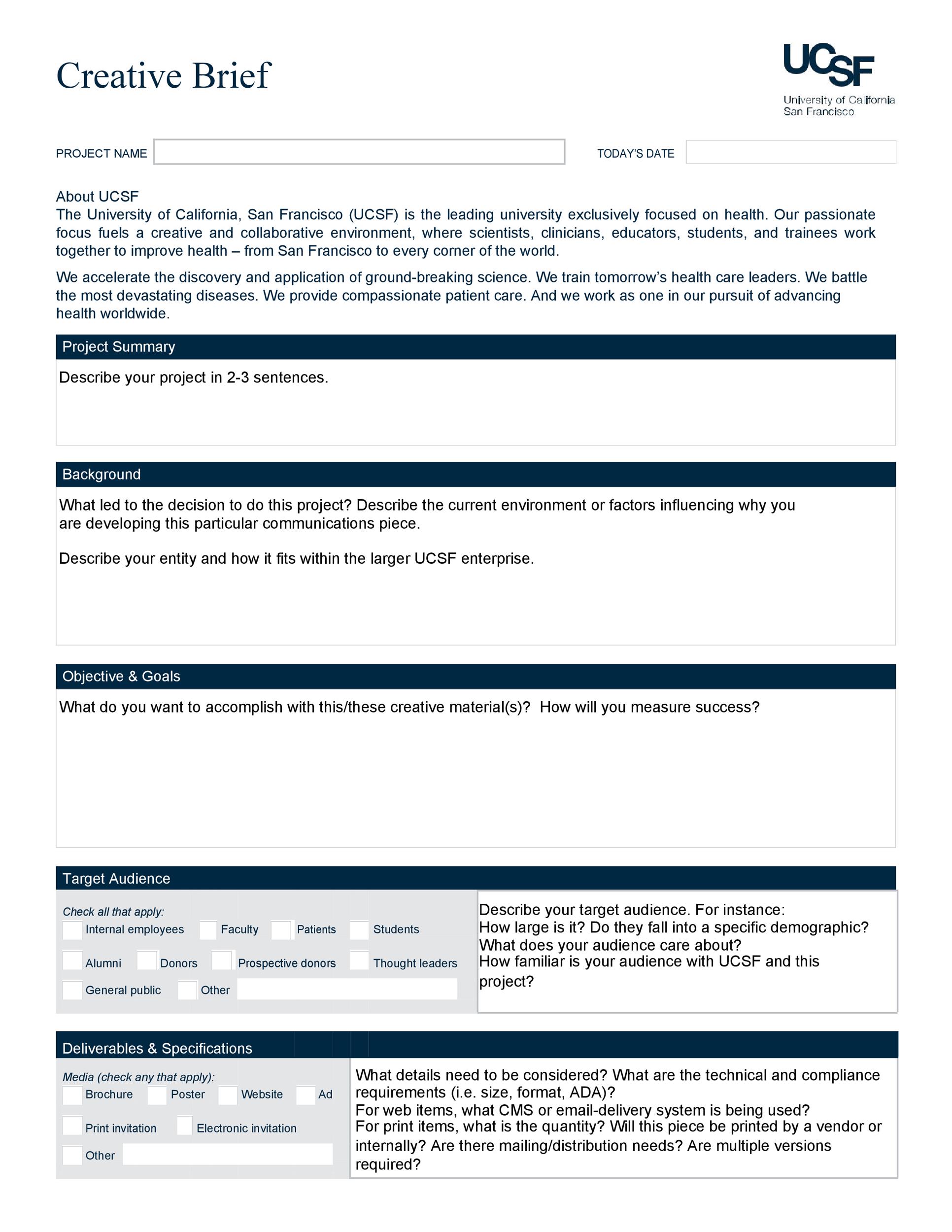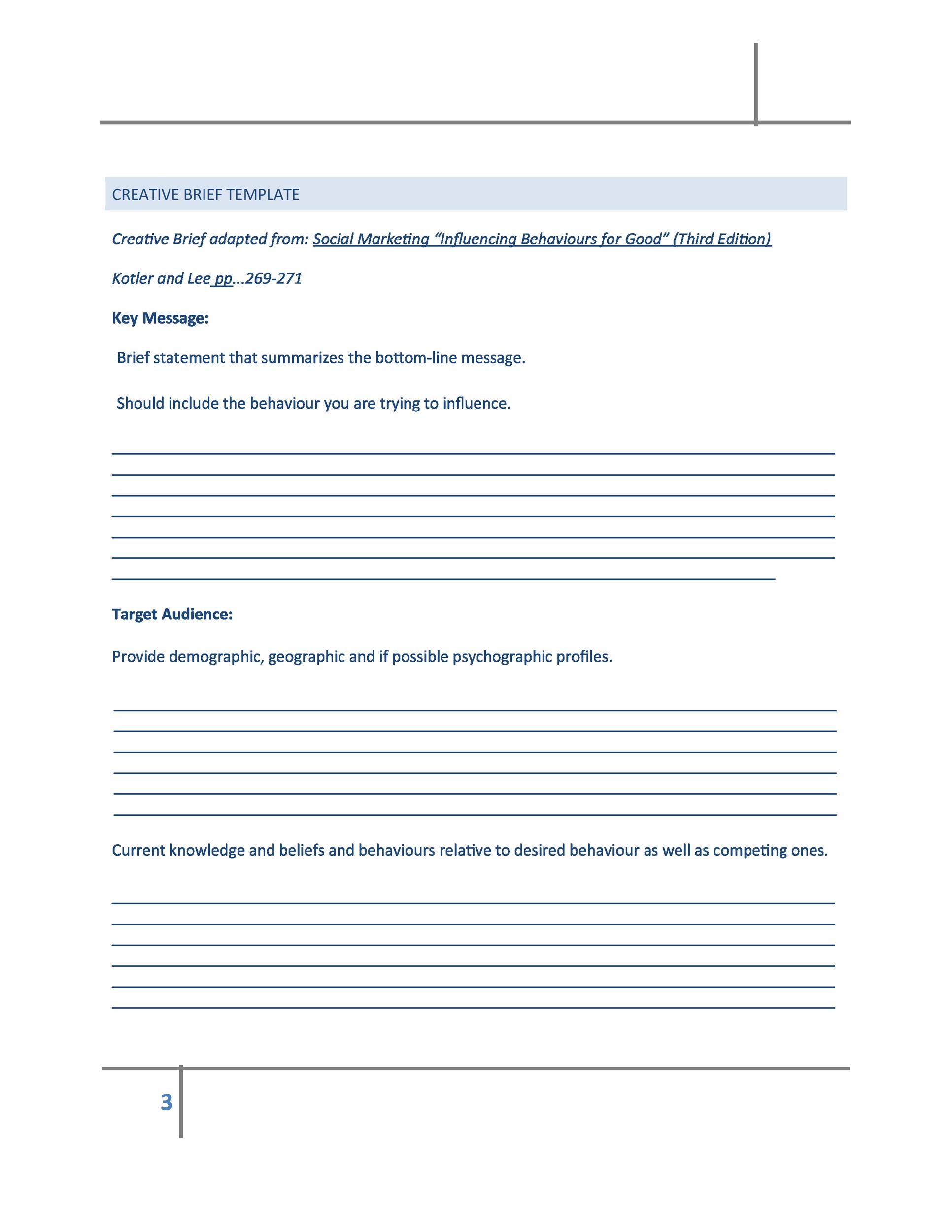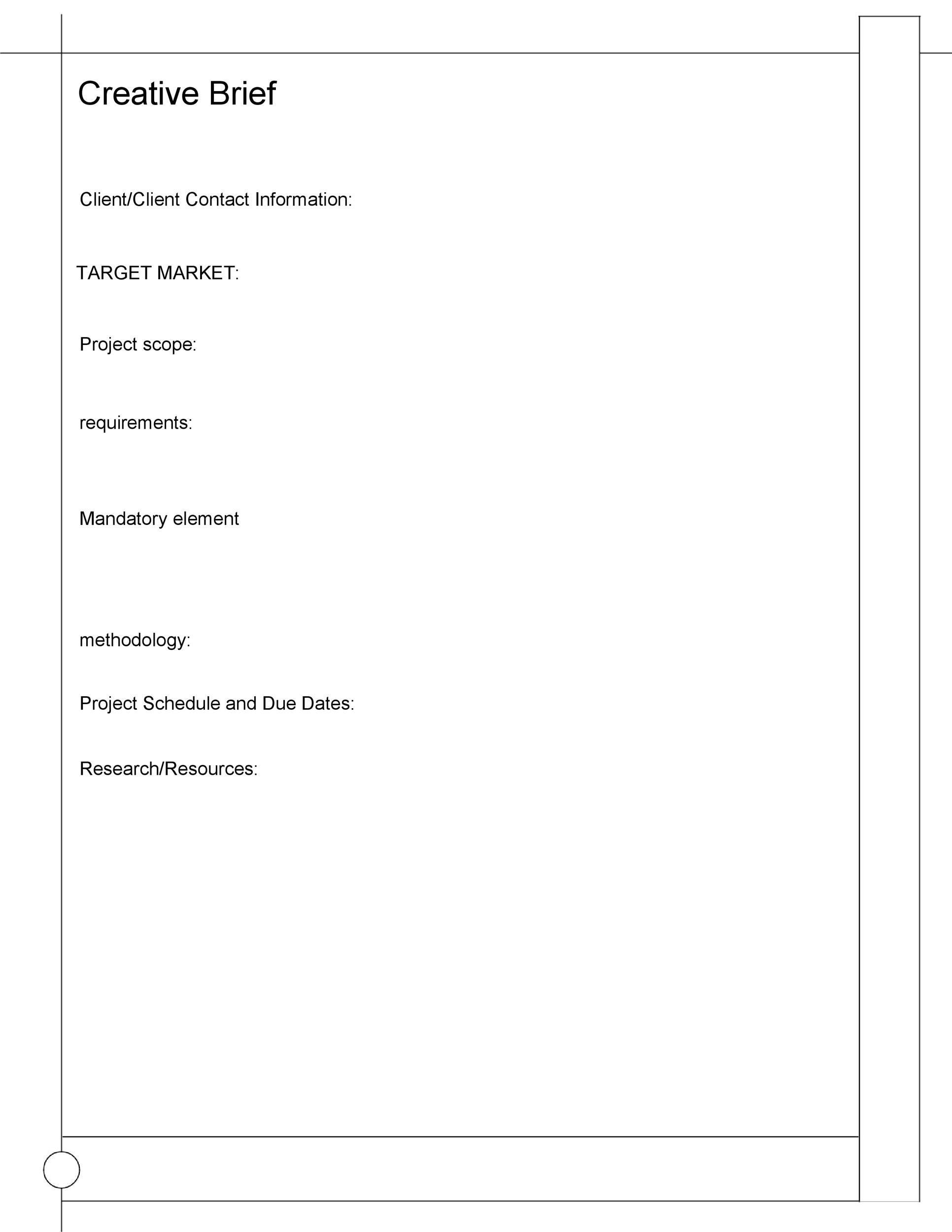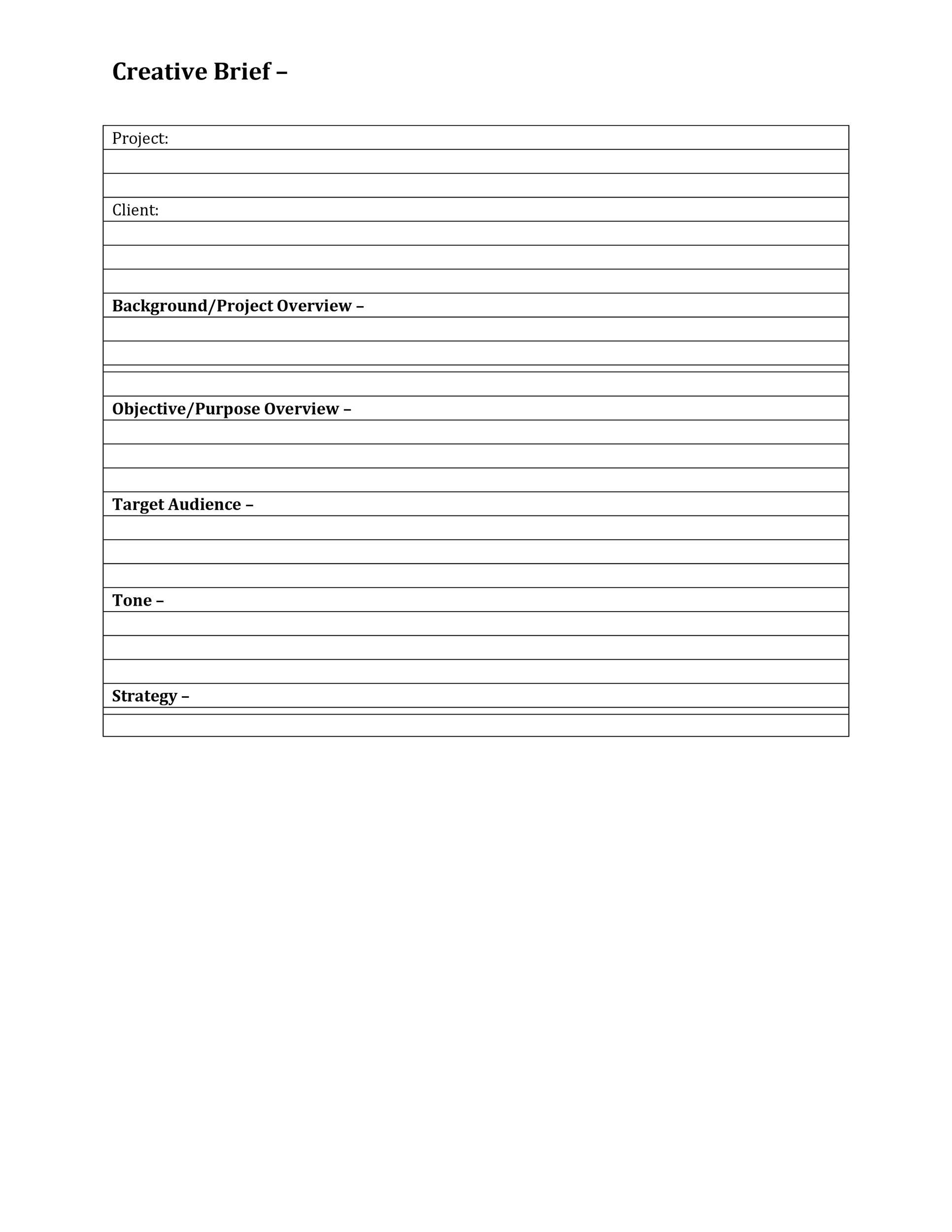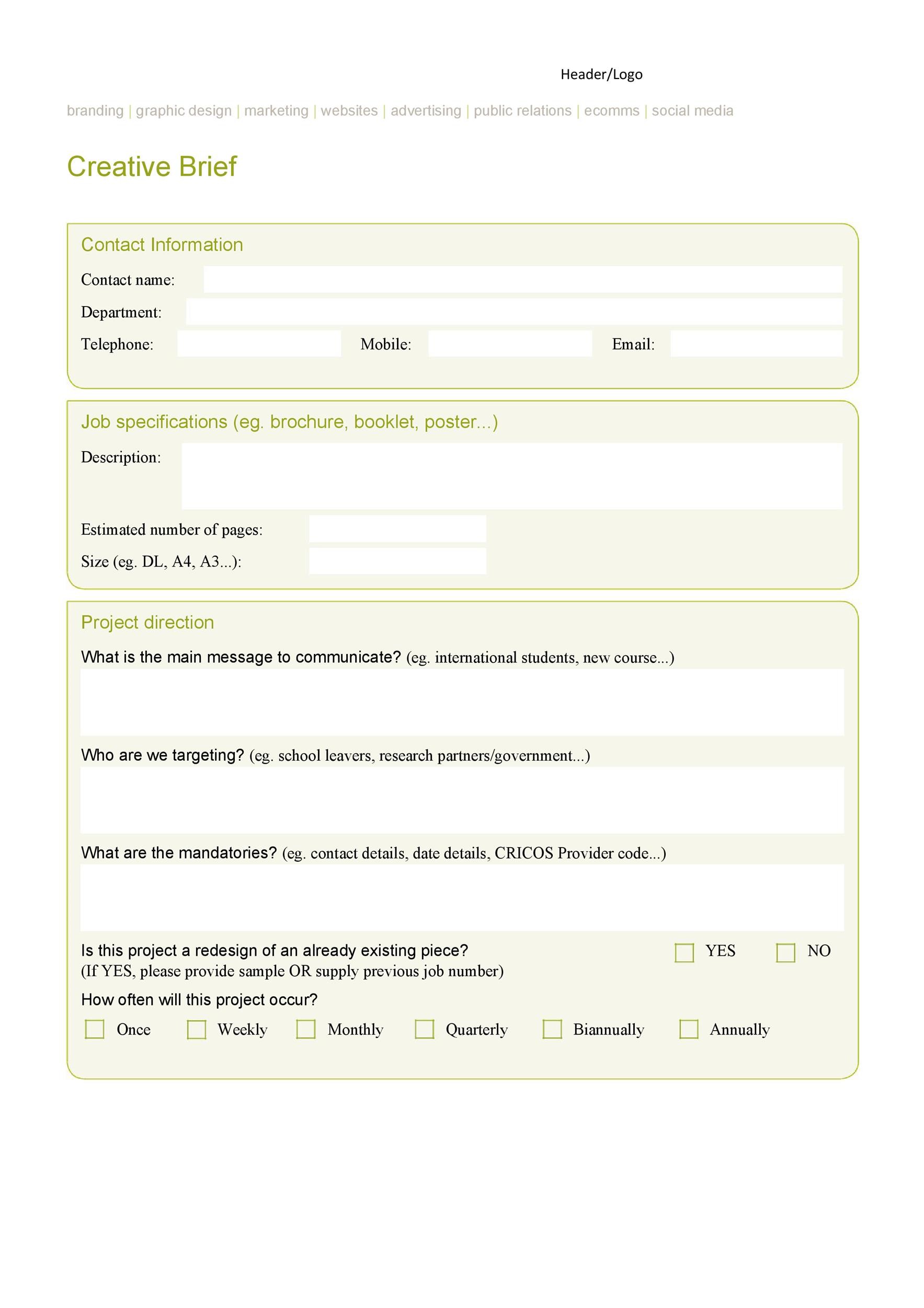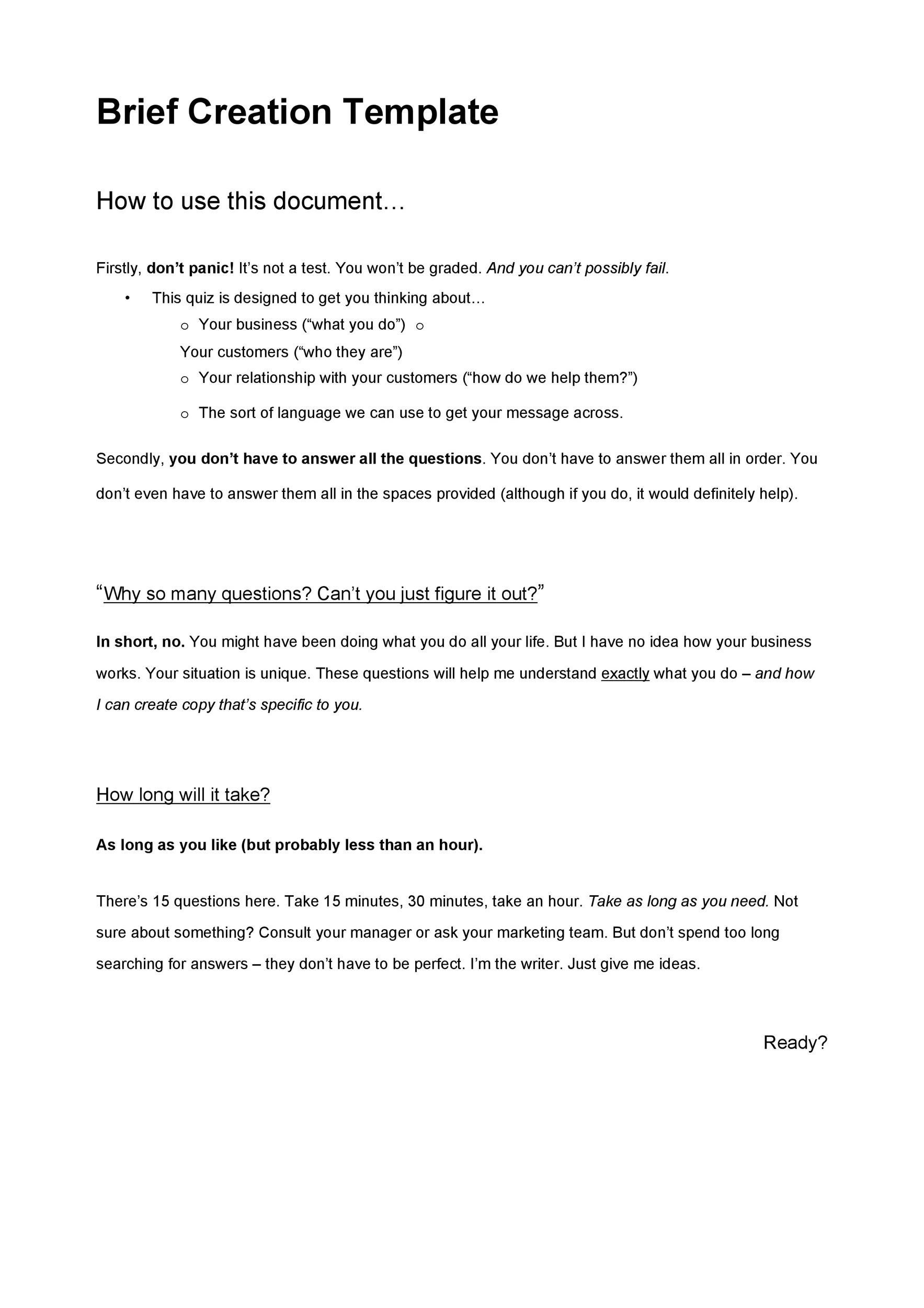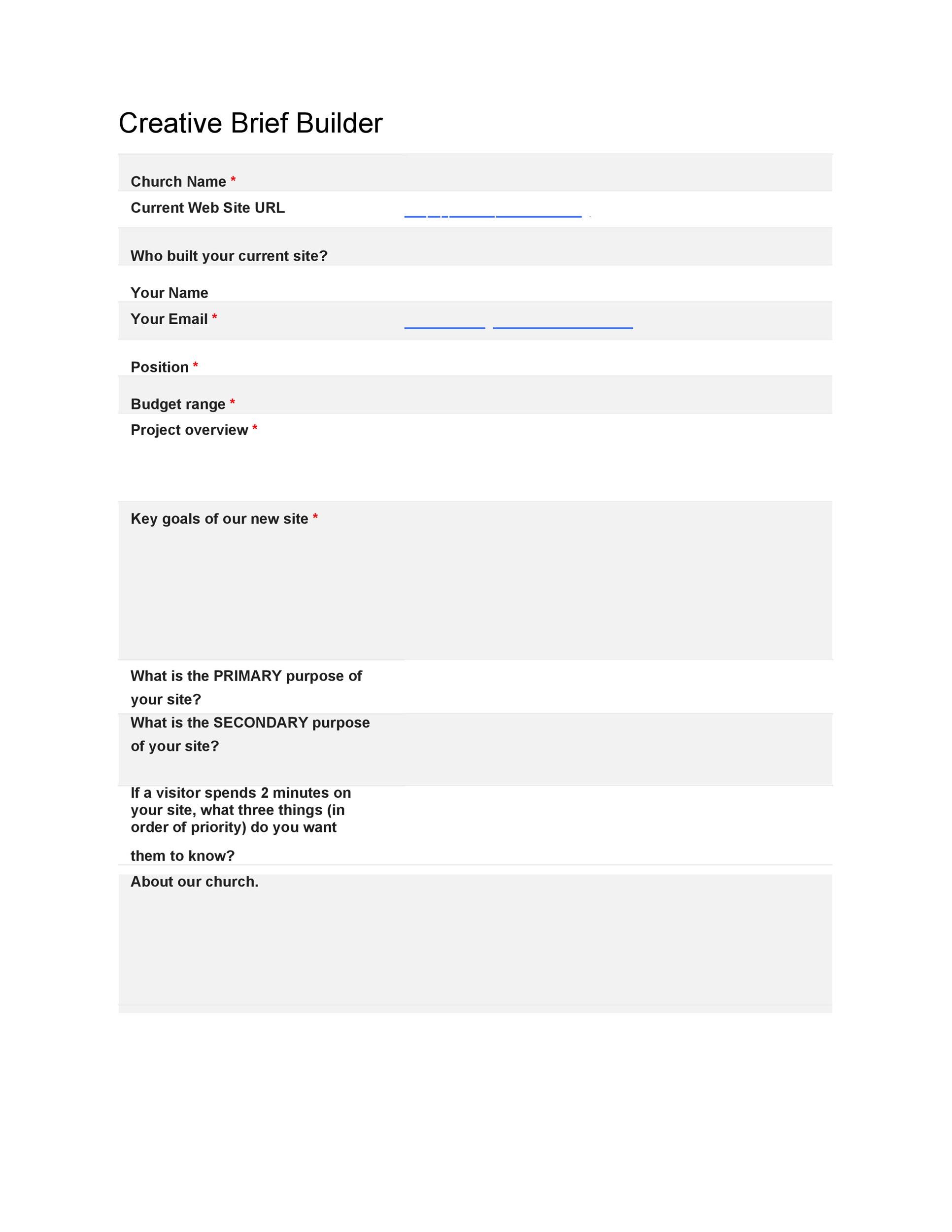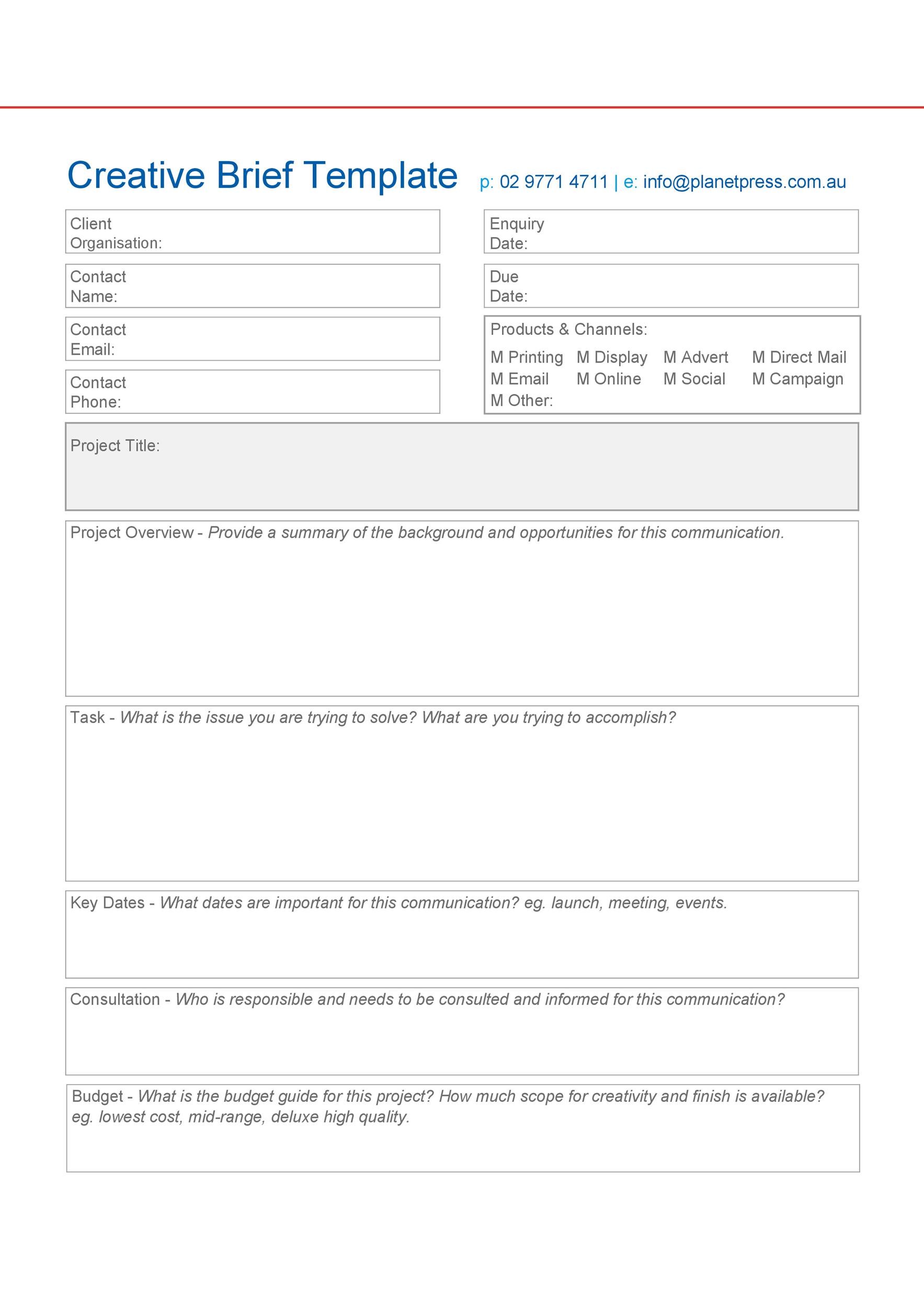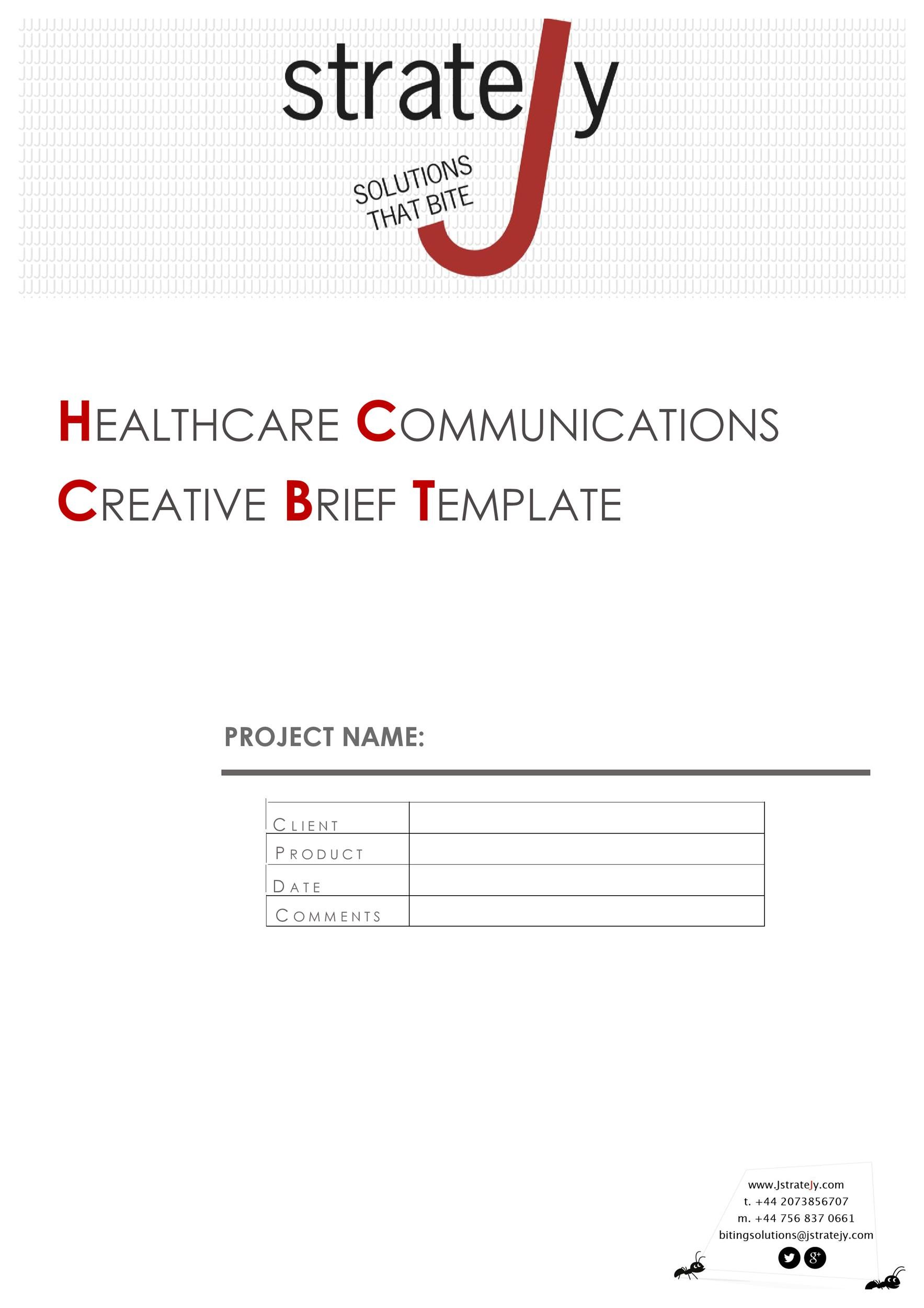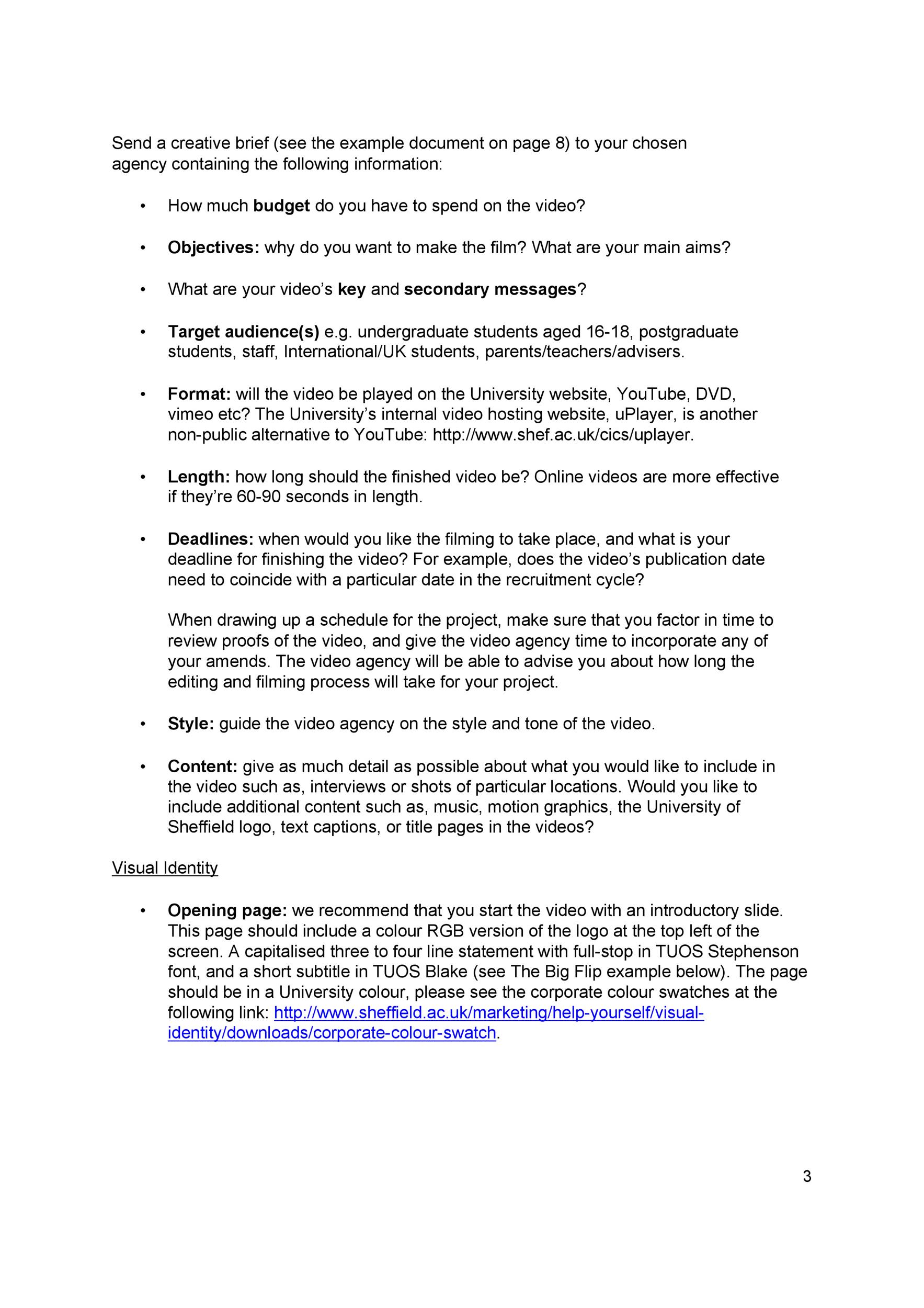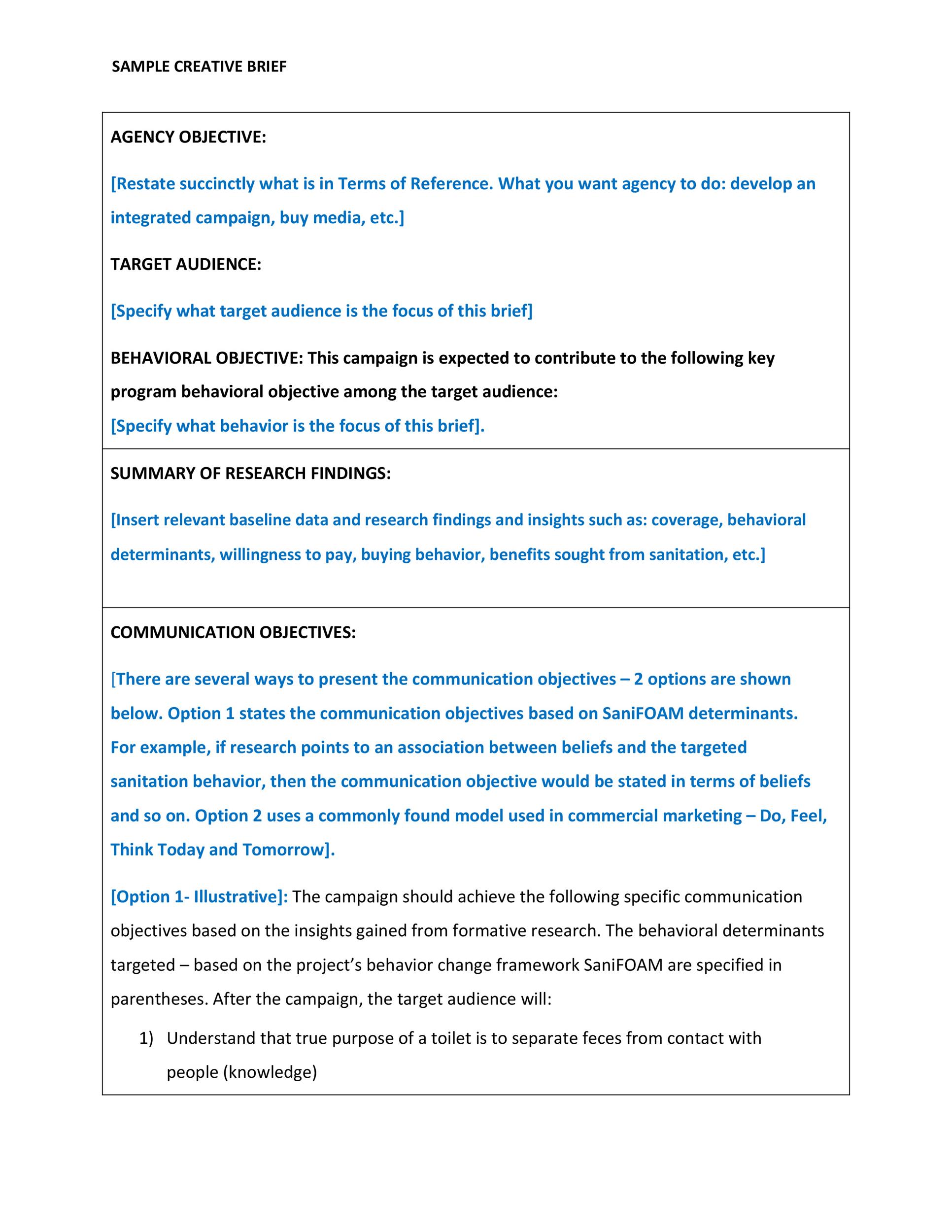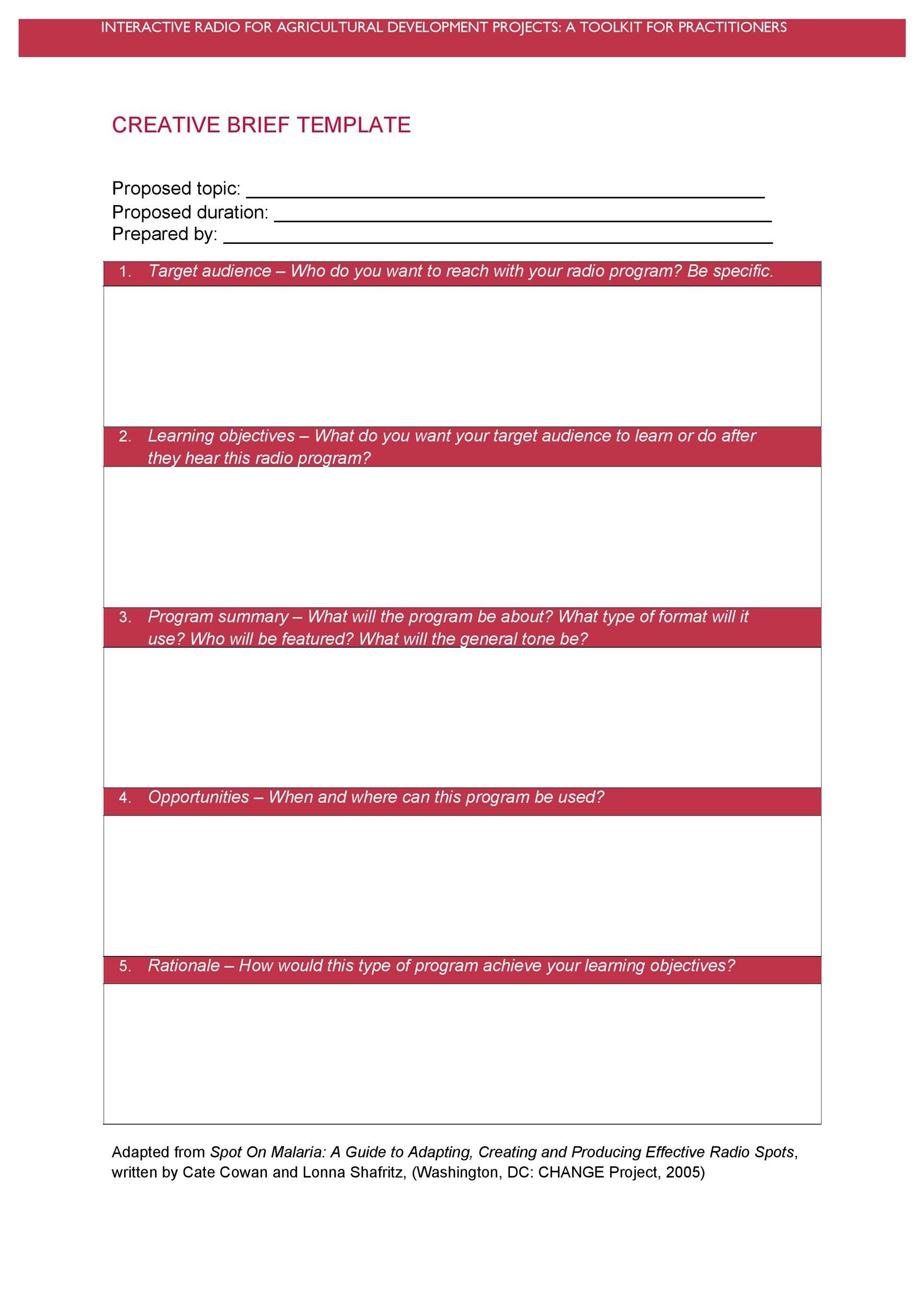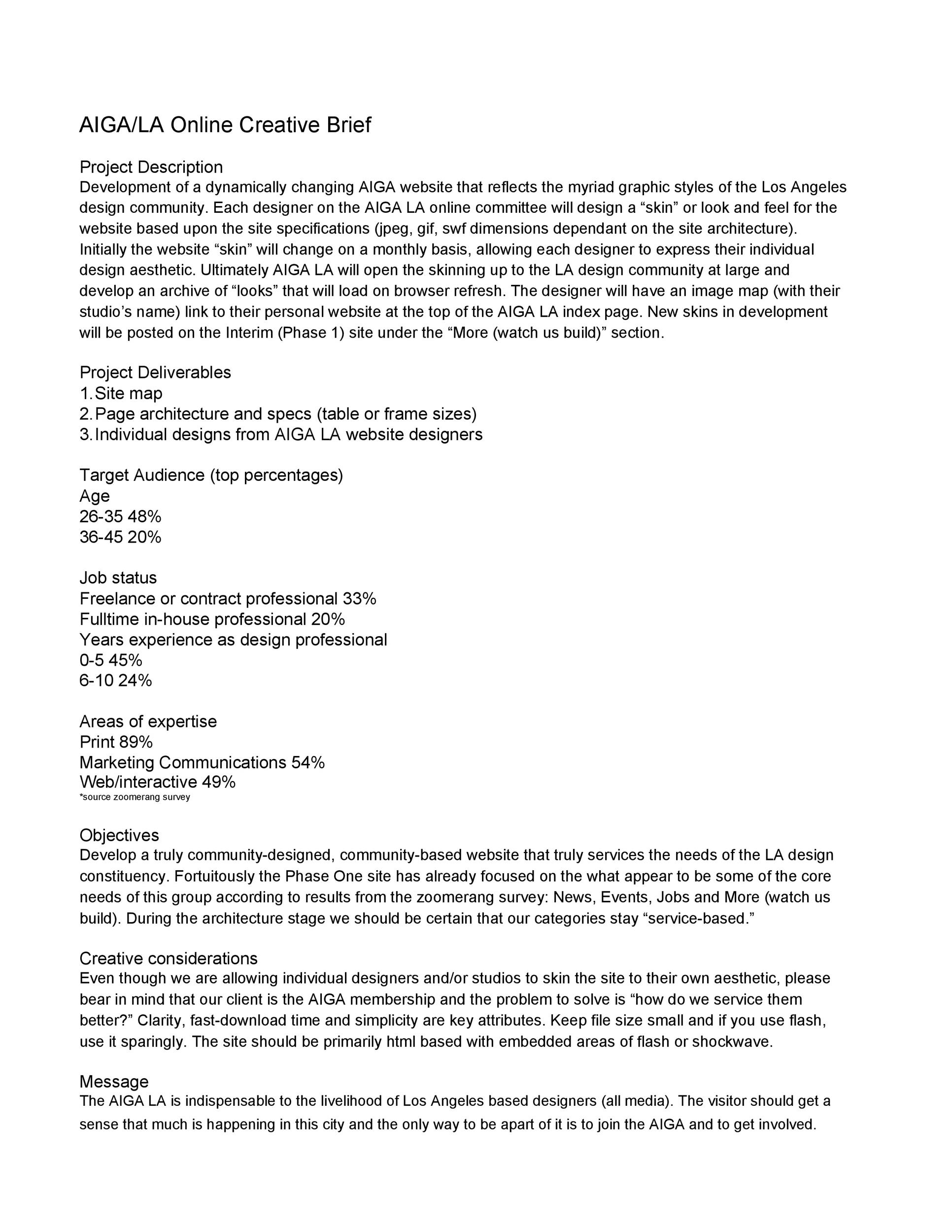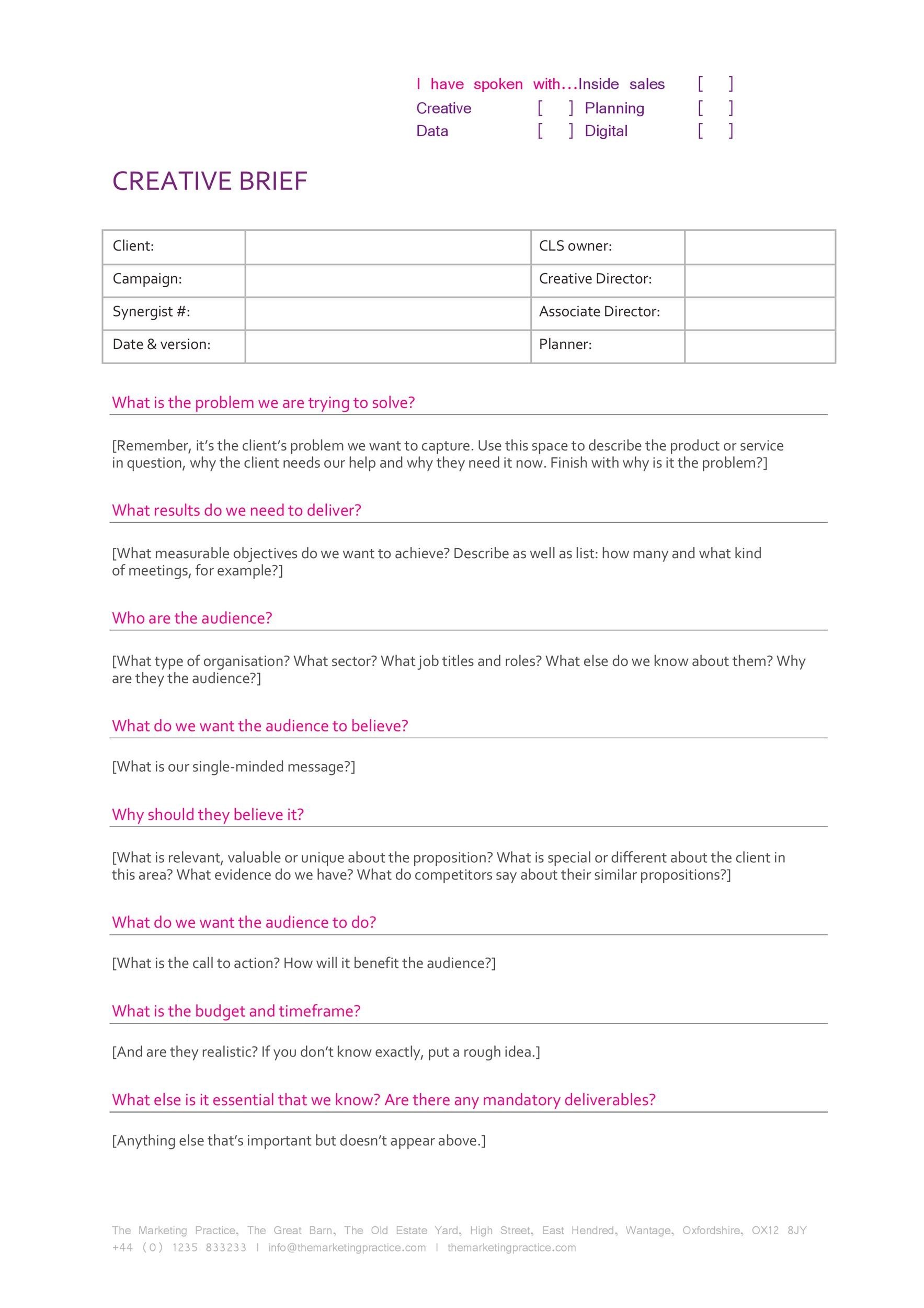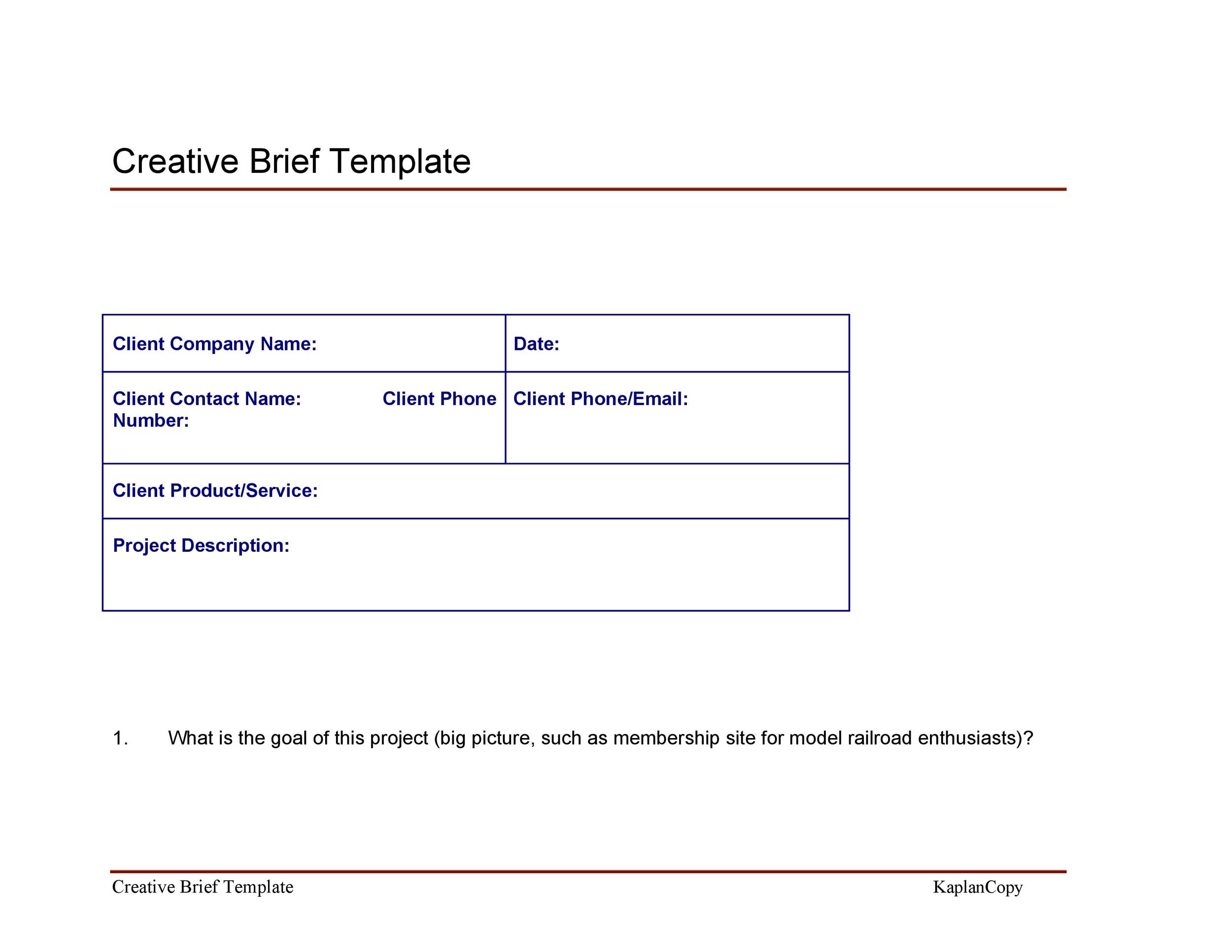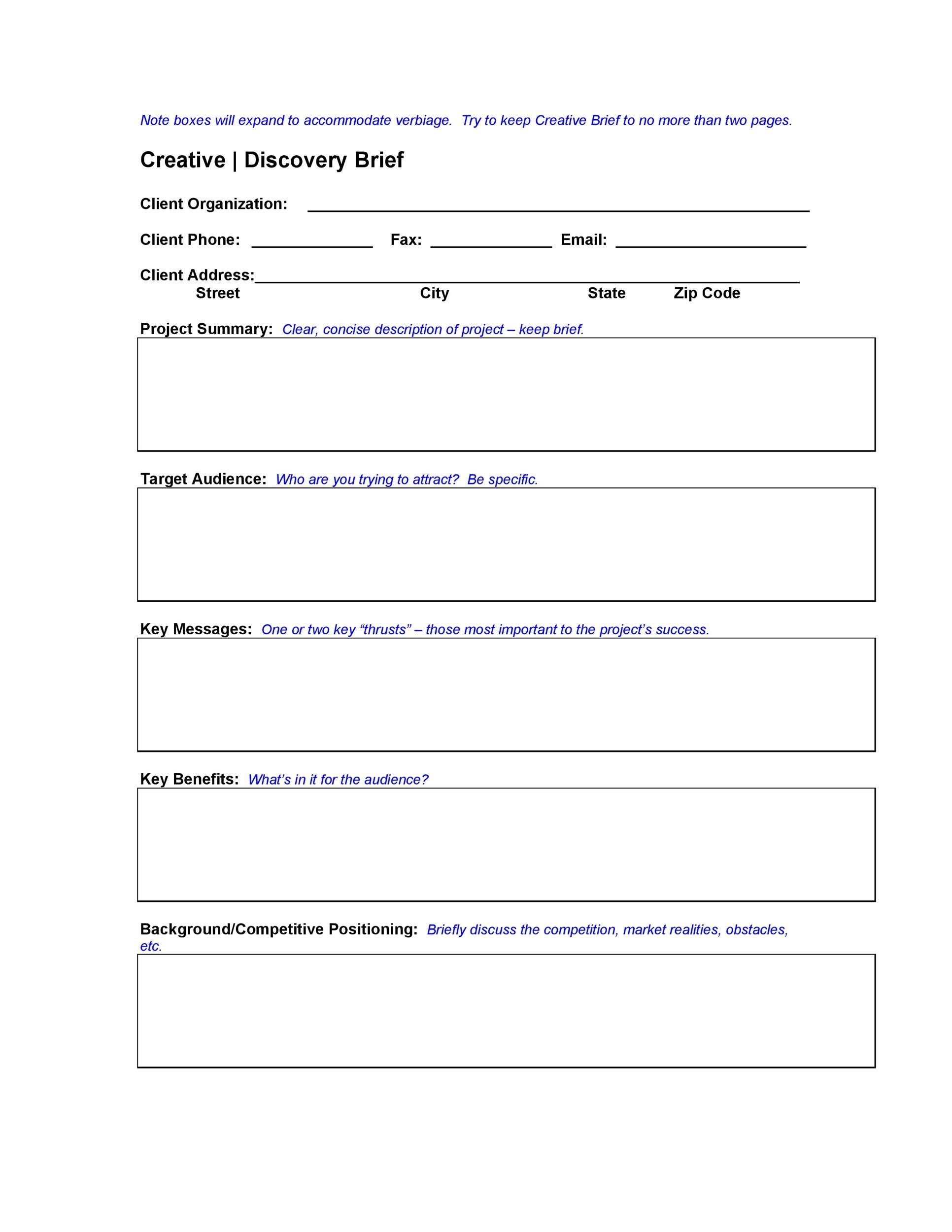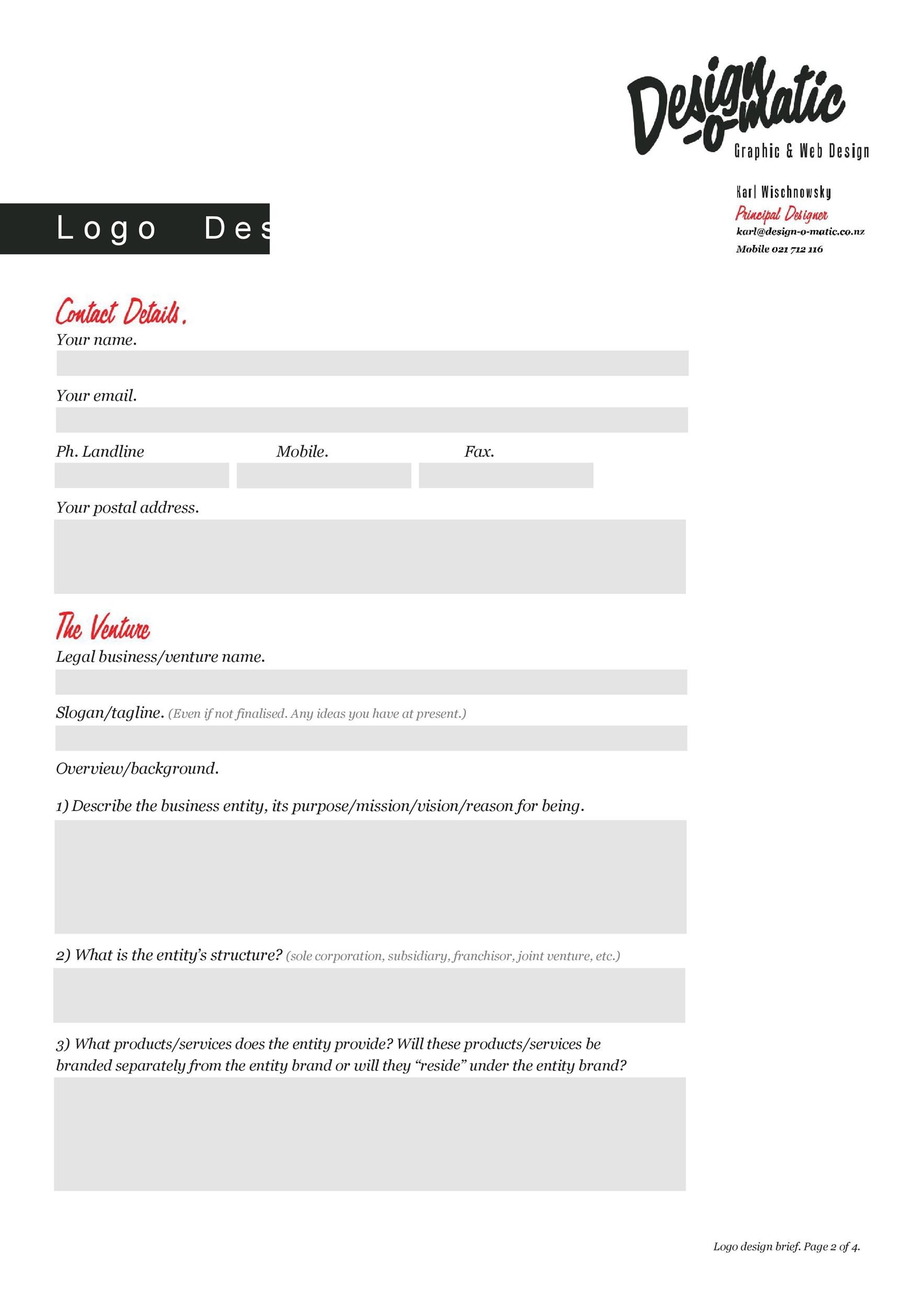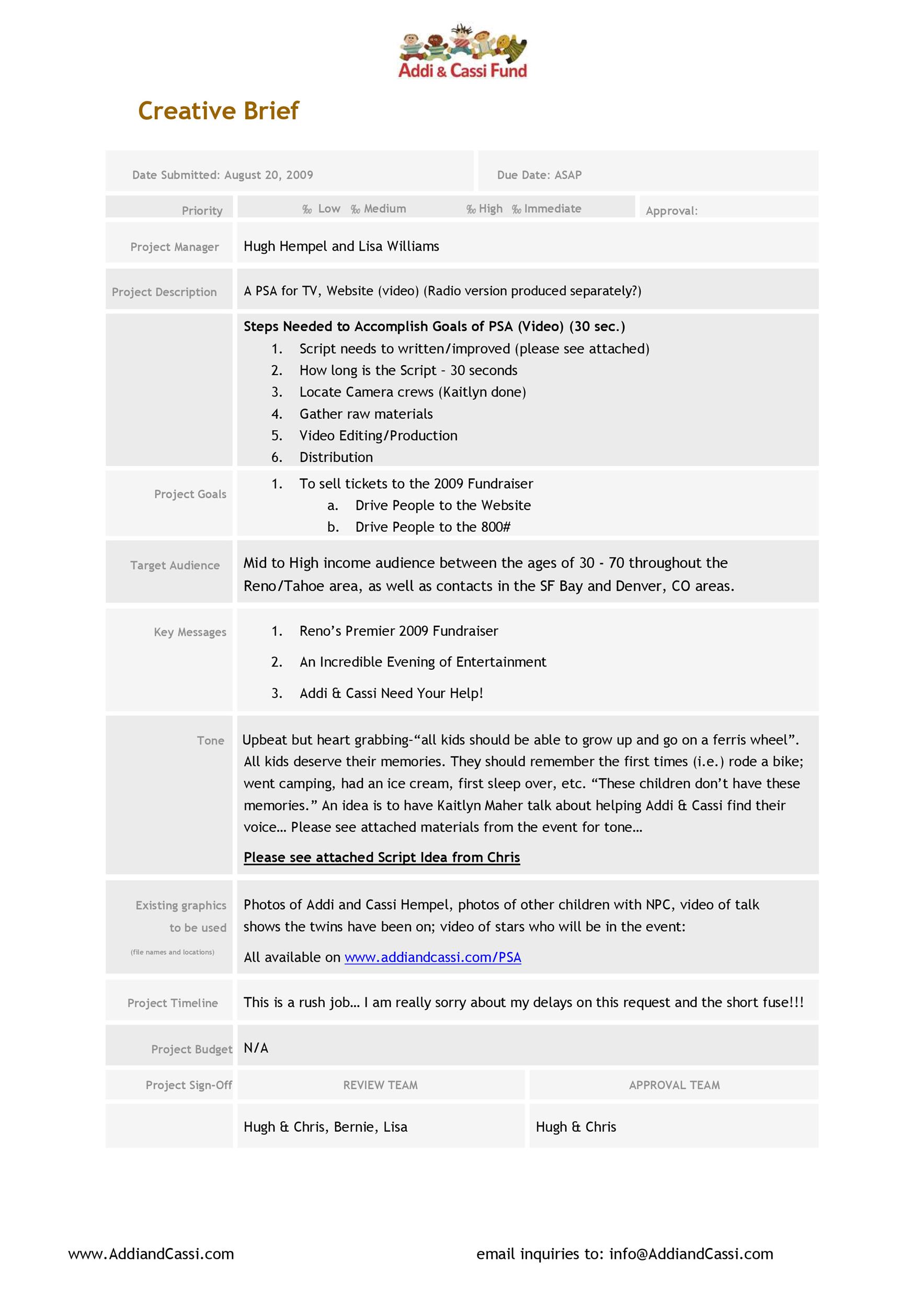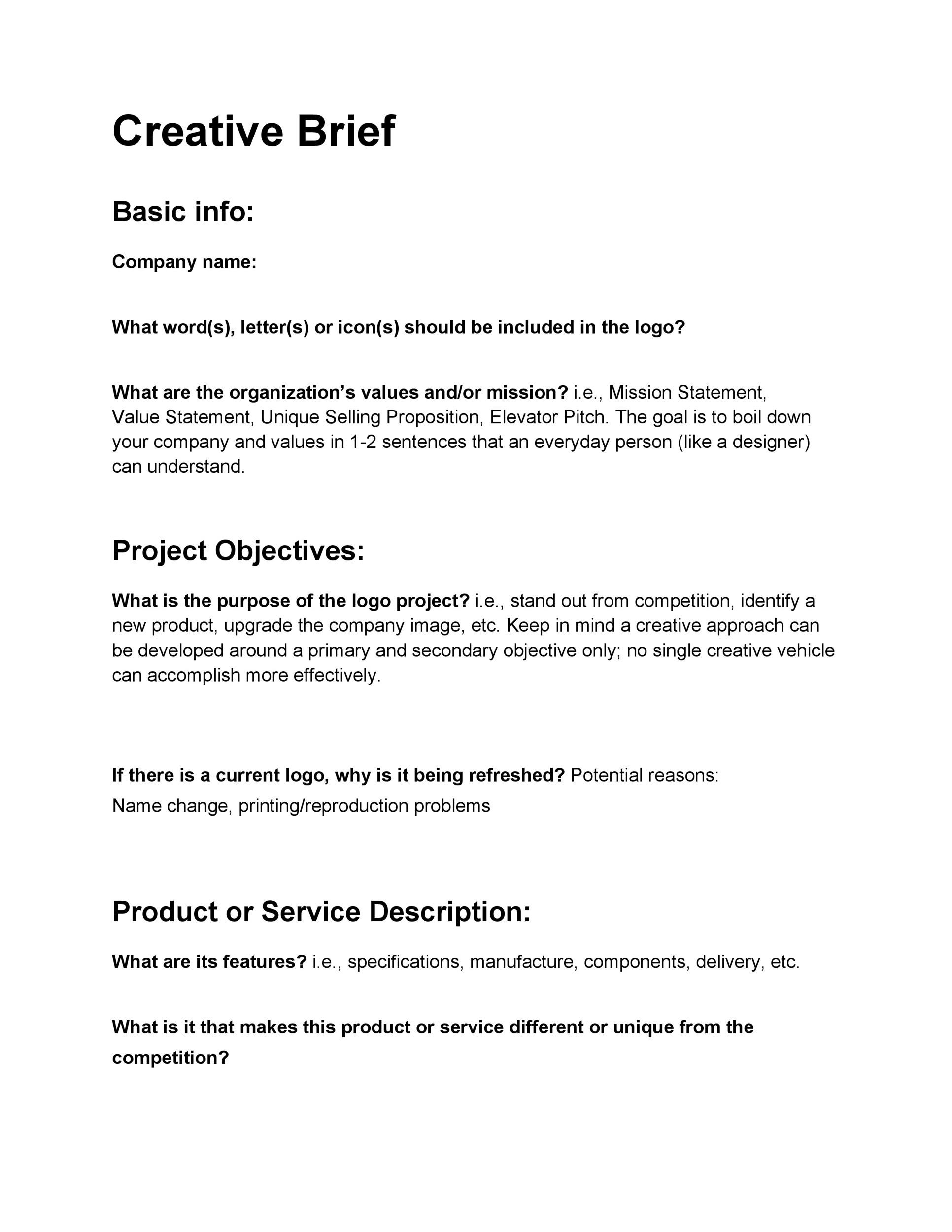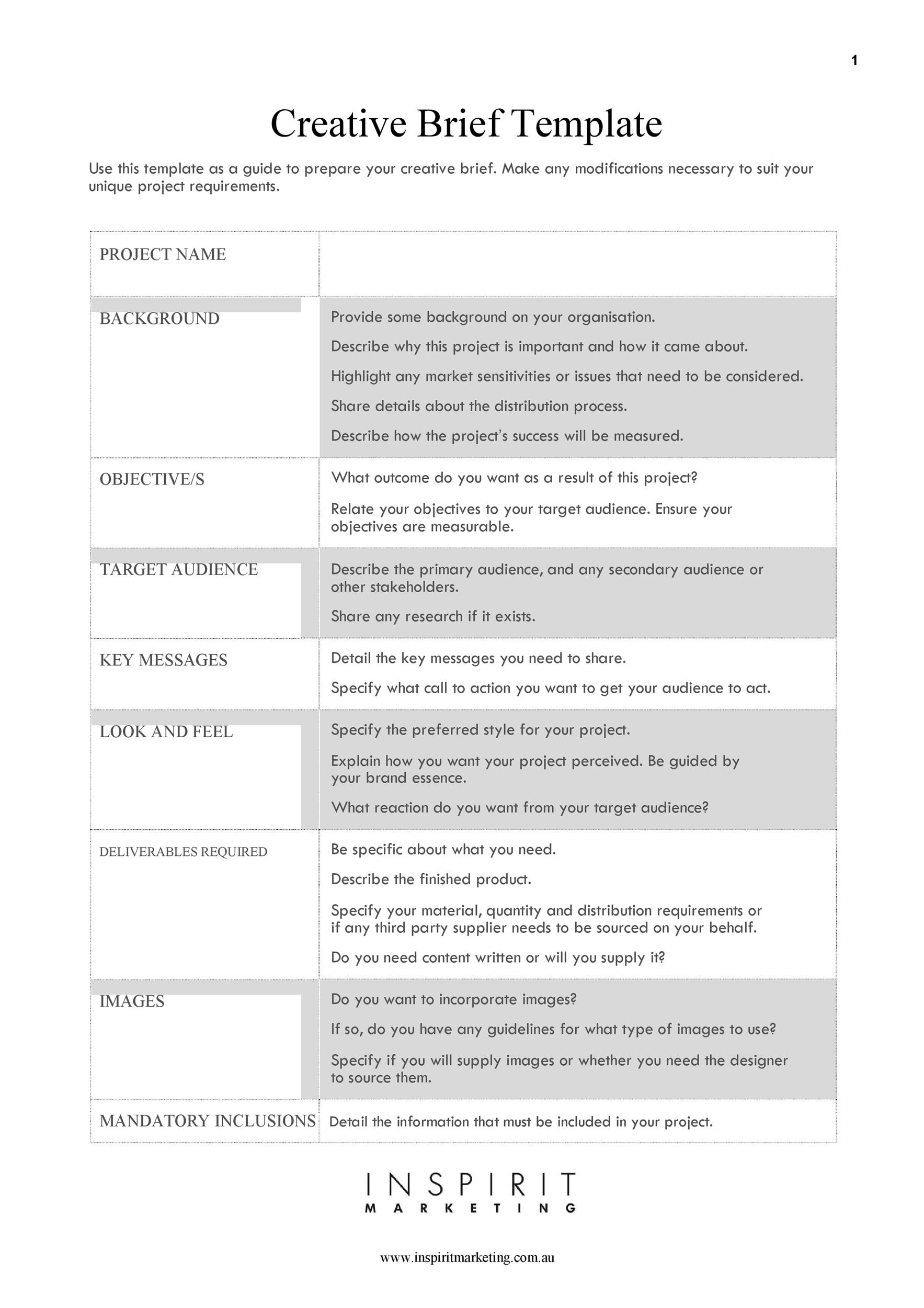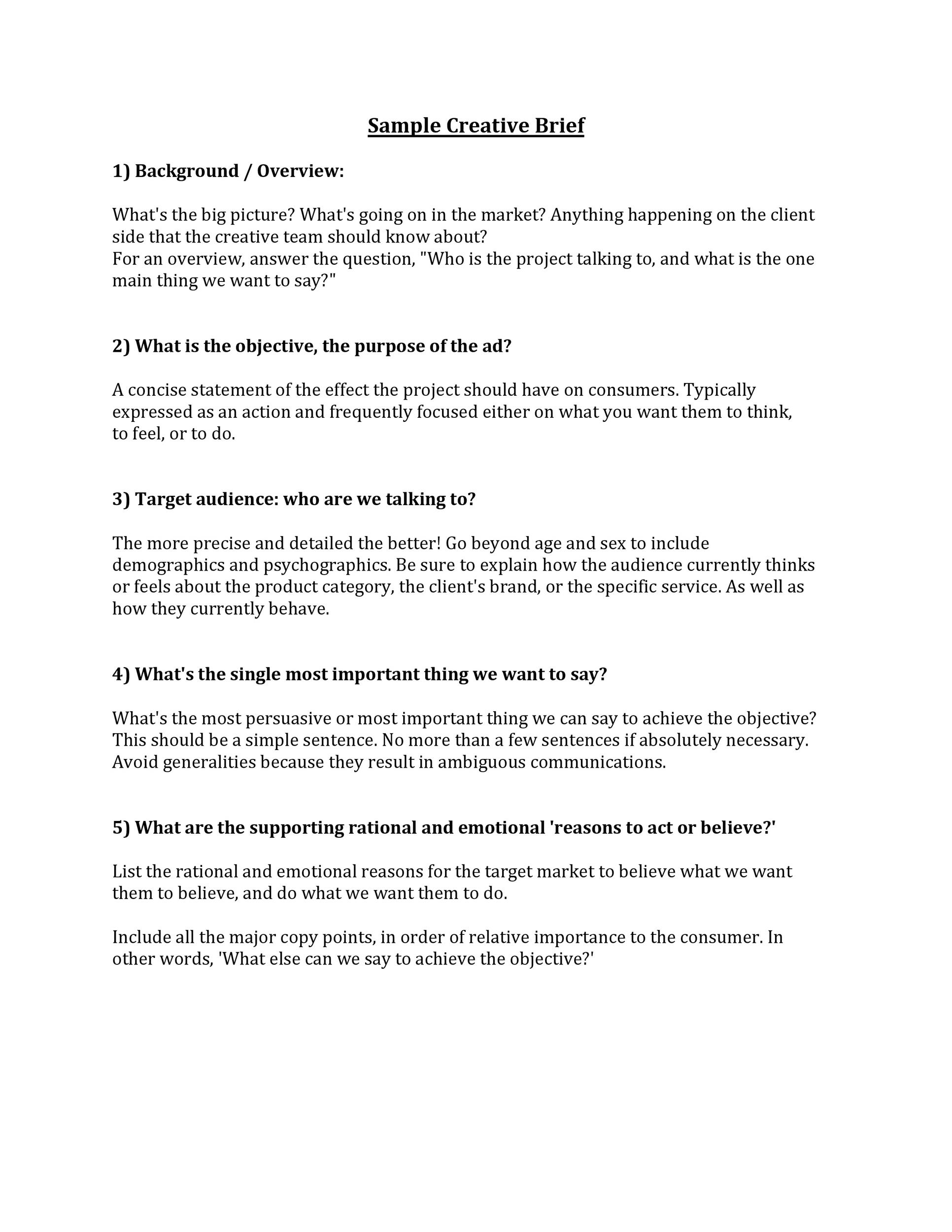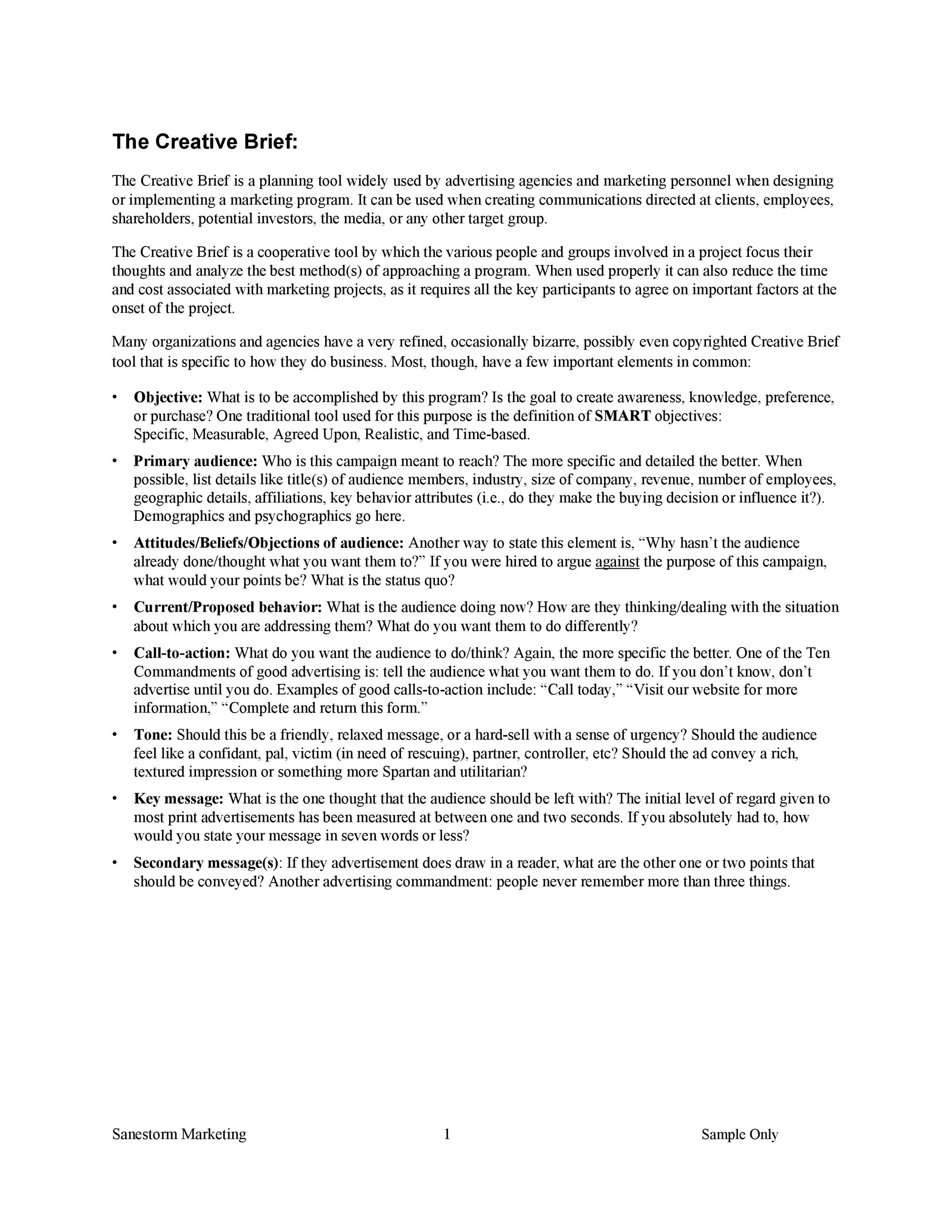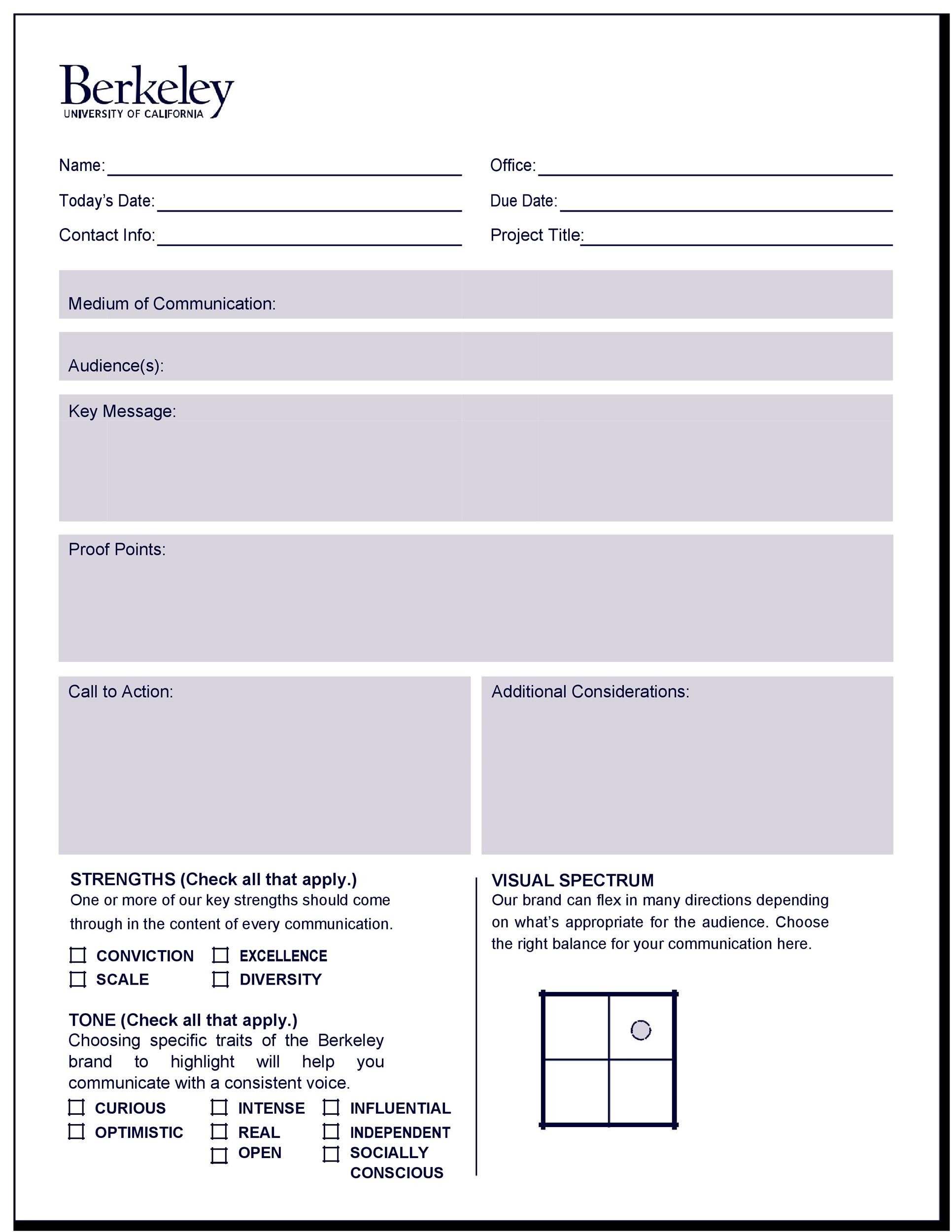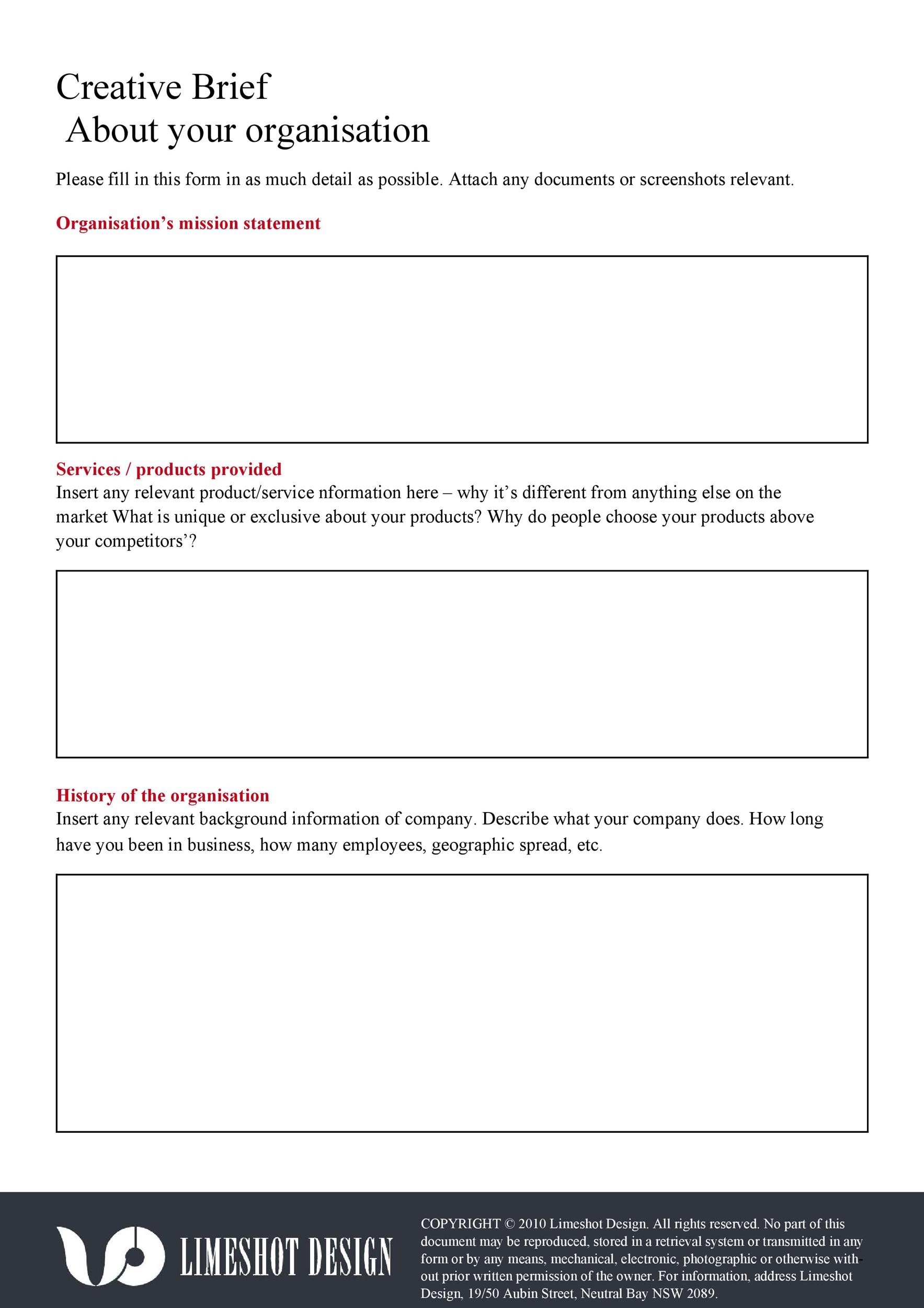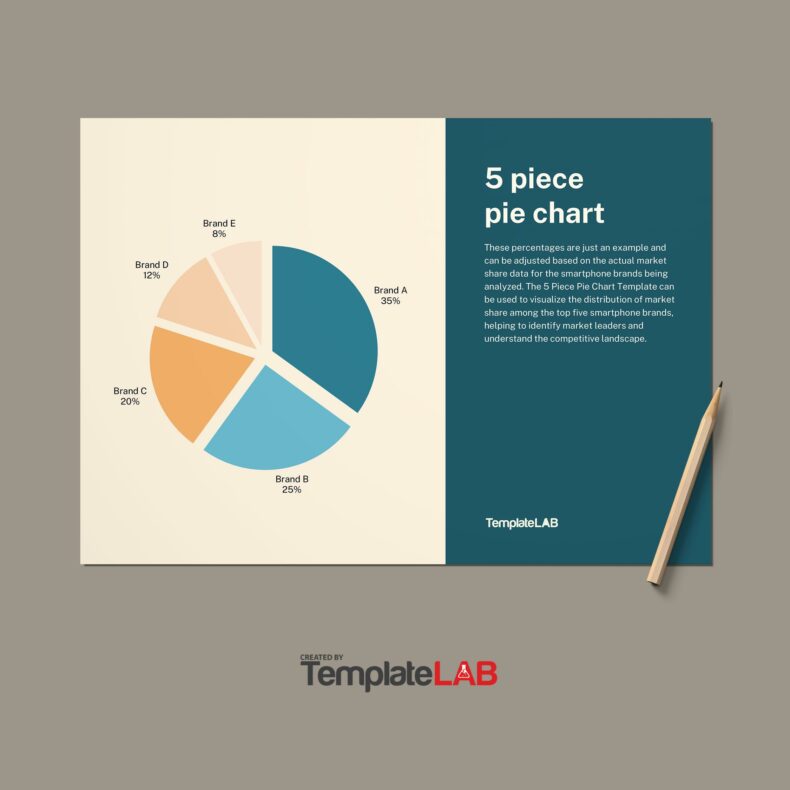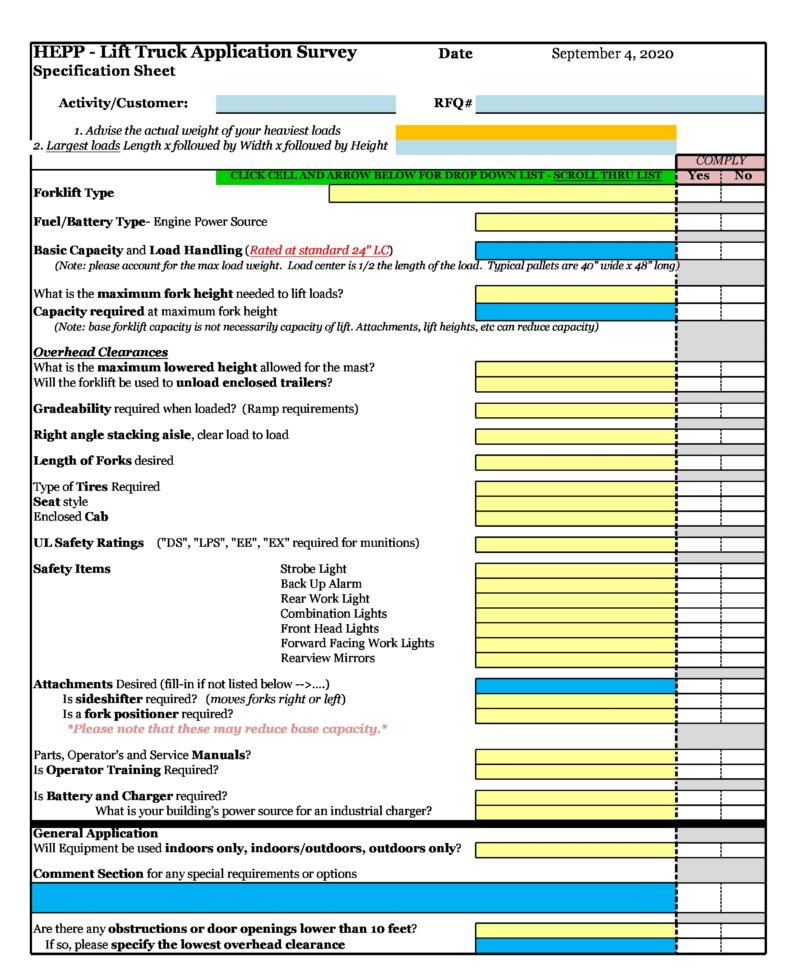A creative brief template is an essential document or tool in any kind of marketing or advertising campaign. It’s a sort of metaphorical map which the people in the creative team follow. It shows where to start and how to follow through with the project at hand. It’s a document which is created by the requesting party to define the parts of a creative piece of work. The term creative brief is frequently used in advertising. It represents the very first step in the process of creating and developing all kinds of materials such as advertisements, websites, promotional videos, etc.
It can also be defined as a fairly short document used by project managers or creative professionals to serve as a guide in developing different creative materials. These materials are then used in communication, marketing, and advertising campaigns.
Table of Contents
A well made brief will typically be 1-2 pages in length only. That should be sufficient to outline the most important components. It should be made and completed on or before the design phase. It makes clear the strategy for communication as well as the context to be able to ensure that all the creative deliverables will be produced in alignment with the strategy.
The main purpose of such a document is to serve as a guide since it is produced by the requesting party or the customer. It is made and given to define clearly what is expected of the deliverables as well as the strategy for communication it must be aligned with. A great creative brief example must inspire your whole creative team to brainstorm on brilliant ideas as well as effective communication strategies to be able to solve a specific problem. While gathering all the facts, the brief should help place your creative team in a place where they will be able to find a creative and innovative solution.
Create Brief Templates
A compelling document is important for guiding the creative team as they are developing materials and messages which fit into the communication strategy of the company and make it as successful as it can be. Developing such a brief is not a job which can be accomplished by just one man or woman. You will need a small team of professionals who come from different fields to be able to explain in detail the message which the creative piece is meant to put across.
It’s important to have a team work on developing the document to ensure that it won’t communicate just one person’s point of view. When that happens, then the brief becomes less accurate. It also guarantees that all the concepts and definitions in the document are explained clearly so the team which receives it will understand the brief.
The Benefits of Making a Create Brief Template
A creative brief is a short document which is developed during the “definition” phase of the creative development process. It is made to encourage the creative team and give them relevant information about marketing, branding, and demographics. It helps build the foundation for the creative team to come up with and develop creative deliverables for the customer.
A great brief must answer basic questions. These are:
- What is the project?
- Who is the project for?
- Why are you doing the project?
- What needs to be done for the project?
There are times when customers make a brief which is already completed as part of their document requirements. If not, then the customer will collaborate with the creative team to be able to develop the brief. These documents are essential because they are beneficial to both the customers as well as the creative team. Here are their benefits:
Benefits to the customer
- It makes clear all the objectives and the goals of the project.
- It communicates all the facts and the assumptions.
- It allows all the stakeholders to provide input on the project.
- It helps form an agreement within the customer’s company.
- It provides criteria for the assessment.
- It holds the designers accountable for the results.
- It serves as an indication of the metrics for success.
Benefits to the creative team
- It provides the relevant background information for the design.
- It reveals the facts, insights, and truths about the brand.
- It uncovers the personality, preferences, and values of the customer.
- It highlights buy-in by the customer.
- It gives an explanation for the designs.
- It helps scope creep from occurring.
- It keeps all members of the creative team informed.
- It provides criteria for assessment.
Such a document is purposely limited to one or two pages only. This is because designers and members of a creative team won’t be too inspired if they had to read through and think about too many pages which describe a particular project. It can hinder their creativity and therefore result in a mediocre project or design. Now let’s go through the different types of briefs. This is important so you know which type to make when the need arises.
Creative Brief Examples
A great creative brief will serve as a formal or semi-formal report which companies will create for a particular purpose. The most common types of briefs may consist of different items while other types will have a specific focus. Company owners can either assign a team to create a brief internally or choose to outsource the whole project to another company or organization. The purpose of this brief will then be to provide support for any decisions the management will make when it comes to using the capital. Here are the most common types of briefs for you to consider:
Project Concept
This type of brief defines the different attributes for a specific business project. Briefs made with this purpose must present information about the need, the value or the reason for a new project. Different sections deal with the concept, the design, the implementation and the finances which are required for the success of the project. The length of this type of document varies. The reason for this is that some projects may need to be more detailed than others. If all questions are not answered in the document, then you may have to make a follow-up brief.
Business Objective
This type of brief represents any goals and objectives which a company wants to achieve with the use of standard business practices. It’s more singularly focused as compared to the project concept brief. This type of brief will establish how a goal or an objective will help in increasing the profits of the business. Or how the company will be able to boost its reputation through a particular activity. This type is one of the most frequently used briefs in business.
Value Proposition
This type of brief is the most specific and detailed. Typically a company will require such a brief when expenses will result in a big change to business operations. The proposition is needed to establish how the business will benefit from such a big expense. This type of brief must outline why the expense is essential, the specific benefits which will be immediately received as well as the long-term benefits which will be derived from them. This type of brief is typically shorter because it is focused on a single item.
These are the most commonly made briefs in the business. However, if you don’t think these fit your needs, you can go ahead and look at more creative brief examples online. Also, read on to learn more about this document and how to make it yourself.
Elements of a Creative Brief Template
A creative brief template has no specific and fixed format. You can even make it using different word processing software. You may even come up with a template for your organization to use each time you need it. But, you have to create a new brief for each and every project. This is so you are sure you’ve included all the important project details each time. To be able to make an effective brief, you need to know what the important elements are. Let’s take a look at all of them:
The description of your company
It’s important to give the designer or the creative team background information about your company. This will help them get the context of the project as well as a better understanding of the nature of your business. You can include links to your company website as well as any background material which may be helpful to the creative team.
The summary of the project
Talk about what the project is and why you need it. Give a description of the project, what’s it about and all other essential information which will help the creative team be motivated to do the project creatively.
The explanation of your objectives
This is the most important part of the whole document. It’s important for you to think about your strategies and objectives thoroughly before getting a project underway. Why you need the project, what are you hoping to achieve with the project and what your objectives are.
If you are trying to solve a problem, also think about how you will be measuring the success. These important details will help the creative team understand your objectives better and also help them come up with solutions.
The target audience of your project
When starting a project, you must already have the target audience in mind. Share this information as well as the demographics and behavioral insights in your brief.
The outline of the deliverables which you require
Make an outline of all the deliverables you require from the creative team. Make sure you include file formats, size information and any other essential details. This is so that the creative team will be able to deliver all the right assets to you and your company.
The information about your competition
Also, think about your competitors when you are making the brief. Include a short overview or summary of the competition as well as any relevant trends and market conditions which have an impact on your industry. You can include comparisons of your own project with your competitors to emphasize what you want for your own project.
The details of the message, tone, and style of the project
The message, tone, and style of the project must be consistent with your brand. It should also align with what your project is, what you are trying to achieve with the project and what action you want your customers to take. Make sure you incorporate any and all key messages and strategic positioning which needs to be dealt with. This is so everything the creative team comes up with aligns with your project objectives.
The schedule or timing of the project
If you have a schedule or timeline for your project, make sure to include it in your brief. From the very beginning, when you meet with or start discussions with the creative team, make sure to talk about your schedule and more importantly, the completion date. It’s also a good idea to discuss the whole creative process especially if it’s a fixed-price contract.
The budget of your project
All projects have an estimated or a set budget. Be sure to include the details of your budget in the brief and discuss it with the creative team. If the creative team comes up with their own estimates and it’s more than the budget you’ve set, then talk about it until you’ve agreed upon more realistic expectations. You must agree upon this before you even start your project.
The list of the major stakeholders
The major stakeholders are important parts of the project and the team. They need to be included when discussions take place so make sure to include their contact information. Also, add in how you would like to provide feedback about the project and how you would like to receive the deliverables which are already completed.
Keep these elements in mind when you’re making such a document so you are sure you’ve covered everything important. These will make your brief thorough, effective and easy to understand. Now let’s take a look at some steps and tips to help you write a brilliant creative brief.
Sample Creative Brief
How to Write a Brilliant Creative Brief Template
Making a creative brief template is an important initial step in the design phase of the communication process. It should be based on strategies for communication to make certain that all the creative deliverables are aligned with the strategic approach. Making a such a document is easy, especially when you have all the right information as well as some helpful tips which can guide you. Here are some steps and tips to assist you in making your brief:
Establish the purpose of your brief
Even before you start creating and developing your brief, you should already have a clear understanding of why the project is to be done. You should know exactly why you are asking for messages and communication materials from a creative team. Establish the purpose of the brief by thinking about the audience, the action, and the benefit.
Identify the objectives
The objectives of your brief must be specific and clear. A good tip for writing the objectives is to specify what the target audience should think or feel as a result of being exposed to the materials you are asking for. When you know this, then you can come up with the objectives a lot easier.
Give a description of your target audience
The audience is a big part of your project so naturally, it should be a big part of your brief as well. To be able to create and develop effective deliverables, the creative team must understand who the materials are for. When giving a description of the target audience, make sure to describe who the deliverables are for, what the target audience cares about and what the target audience currently thinks and feels in relation to the objectives you have set.
If you’ve already made an audience analysis before making the brief, you can get all the information from there. This will help the creative team gain more clarity and understanding about what they have to deliver.
Make a list of all the current behaviors or conditions
In your brief, be sure to make a list of all the current behaviors and conditions which might hinder the target audience from adopting the behaviors you would like your communication materials to promote. These behaviors and conditions which are in competitions must be similar to those which are defined in your audience analysis.
Adding this list will allow the creative team to develop the deliverables with more thought and accuracy. They will be able to specifically address the hindrances and make more effective materials.
Emphasize the major issues
Establish the major issues which need to be addressed. Think about one main improvement and its potential effect on your target audience. Even if there are multiple issues, each and every brief you make must focus on just one audience, one message, and one issue.
Think about the major promise
The promise must express how the target audience will benefit from using a specific product or taking a specific action. The promise to the main target audience must be factual, accurate and genuinely beneficial. It’s not just a product or an action. It must answer questions such as:
- Why should I be doing this?
- How will this product or action help me?
It’s a statement which gives a hint about a product or an action but actually emphasizes the benefit the target audience will get from it.
You can brainstorm with the creative team and develop a specific promise for your project or campaign. A good tip is to develop a number of options then test them out with the target audience to see which one speaks to them the most. Keep the tone positive as it’s more appealing when stated that way.
Establish the points of support
It’s a fact that any audience will need factual, realistic and compelling support to even consider the major promise. You can achieve this by making use of facts, testimonials or endorsements from celebrities or important people. You can also illustrate this in the form of guarantees and comparisons. The kinds of support points to be used will hugely depend on what will appeal the most to your major target audience.
Establish the call to action
The call to action is a sort of suggestion to your target audience. It refers to a specific action they must take to get the benefits from the promise. The call to action needs to be realistic and 100% doable. This makes it easier to help the audience make a quick decision rather than delaying the action which might lead to forgetting to take action.
Think about the creative considerations
Examine the situation and audience analysis which you’ve made to be able to establish the suitable materials, media, and overall tone. Give the creative team enough information with creative considerations in mind.
These creative considerations will guide the creative team as they are developing the deliverables of your project. You can also include other relevant considerations such as language, program requirements, geographic placement, branding, and literacy as well as marketing guidelines.
Map out the timeline
The brief will serve as a guide from the creative team so it’s important to include a realistic timeline. It should explain each task with a sensible number of days to complete the task. You can suggest to the creative team to print out a separate timeline to place in a visible location. This will help them stay on track, time-wise. If you make any changes in the timeline or in the tasks, make sure to inform the team.
Develop your project budget
Finally, think about the budget you’ve allotted for the project or the deliverables. Include it in your brief to make it clear to everyone involved.
Creative Brief Outline


